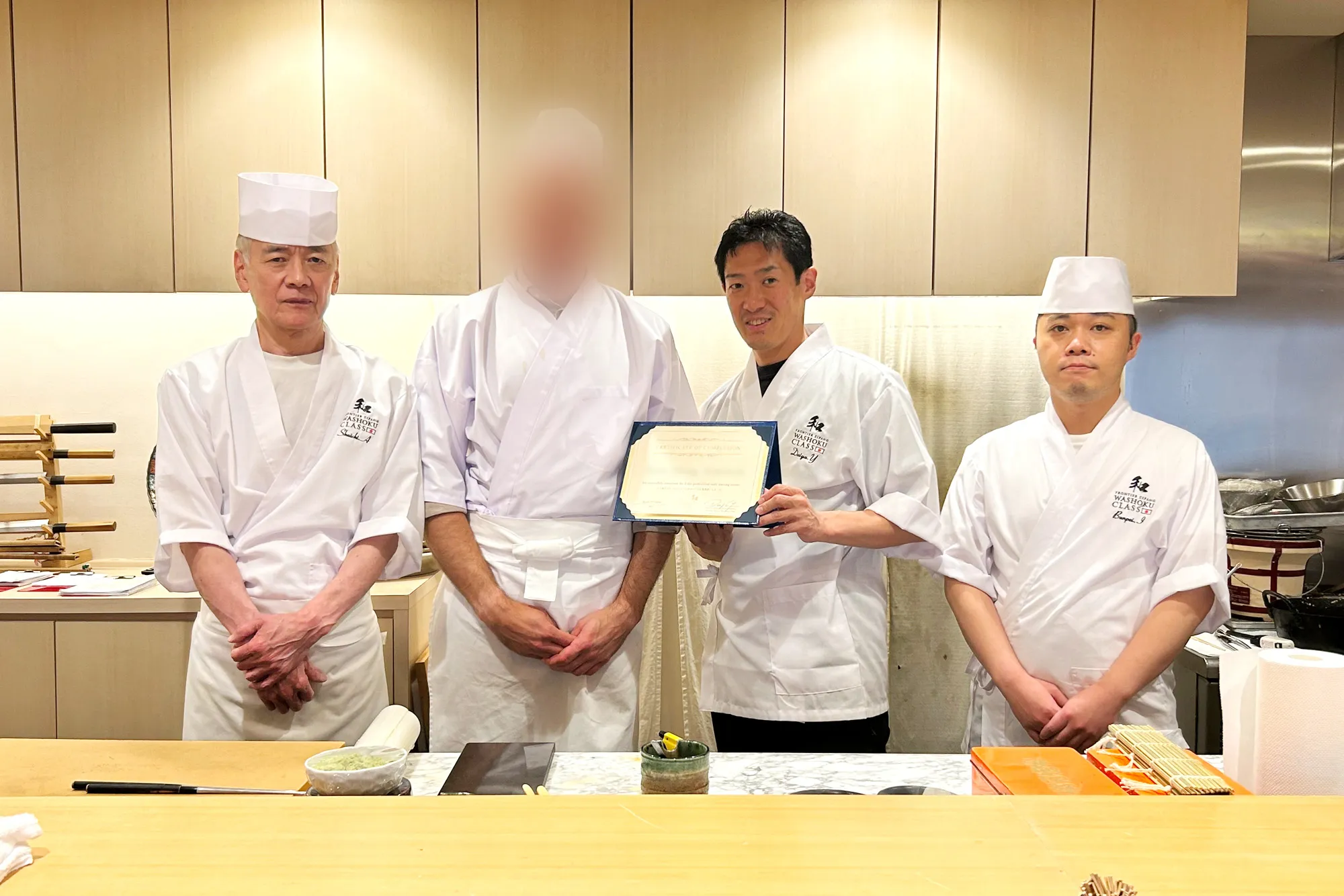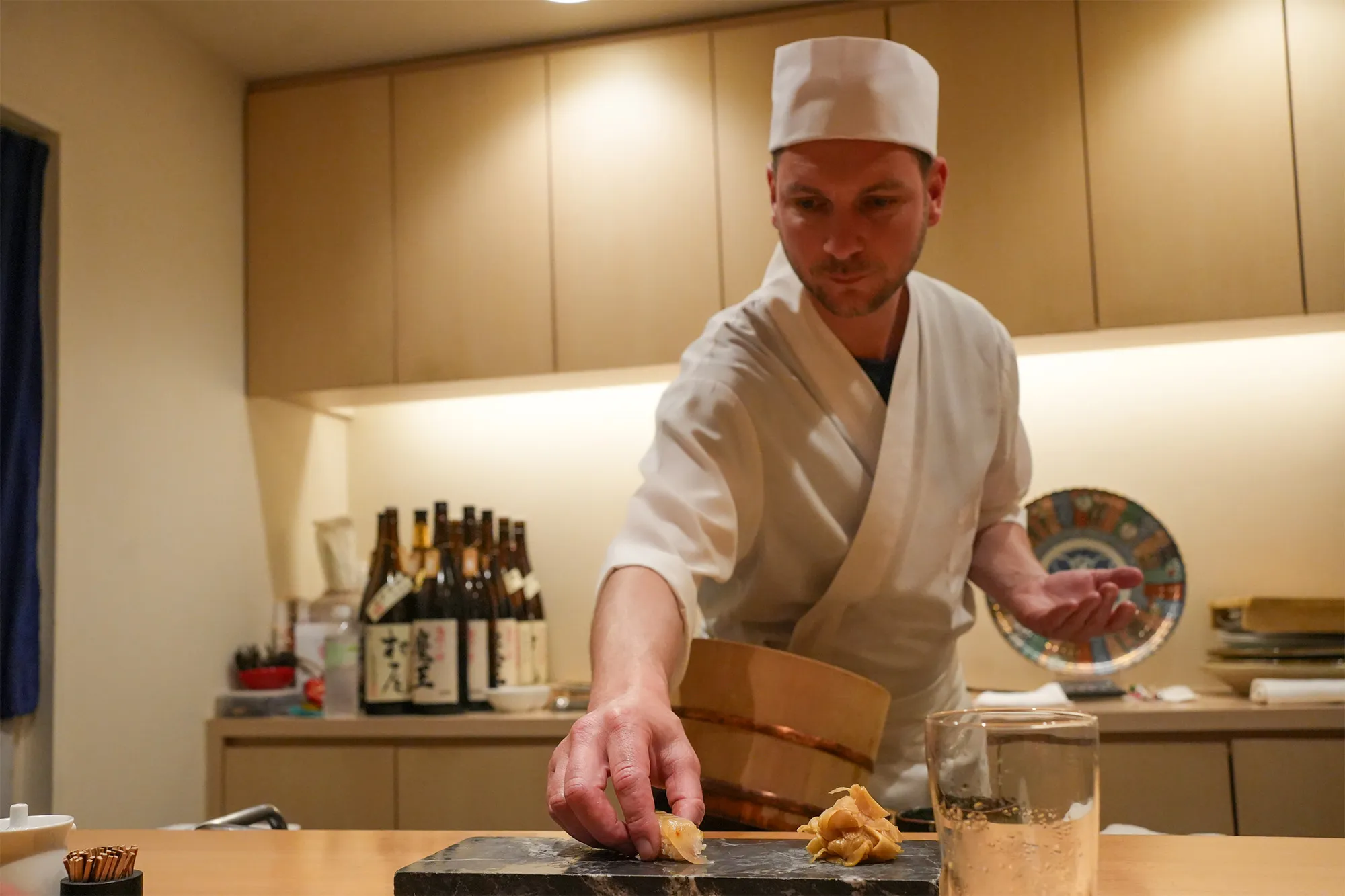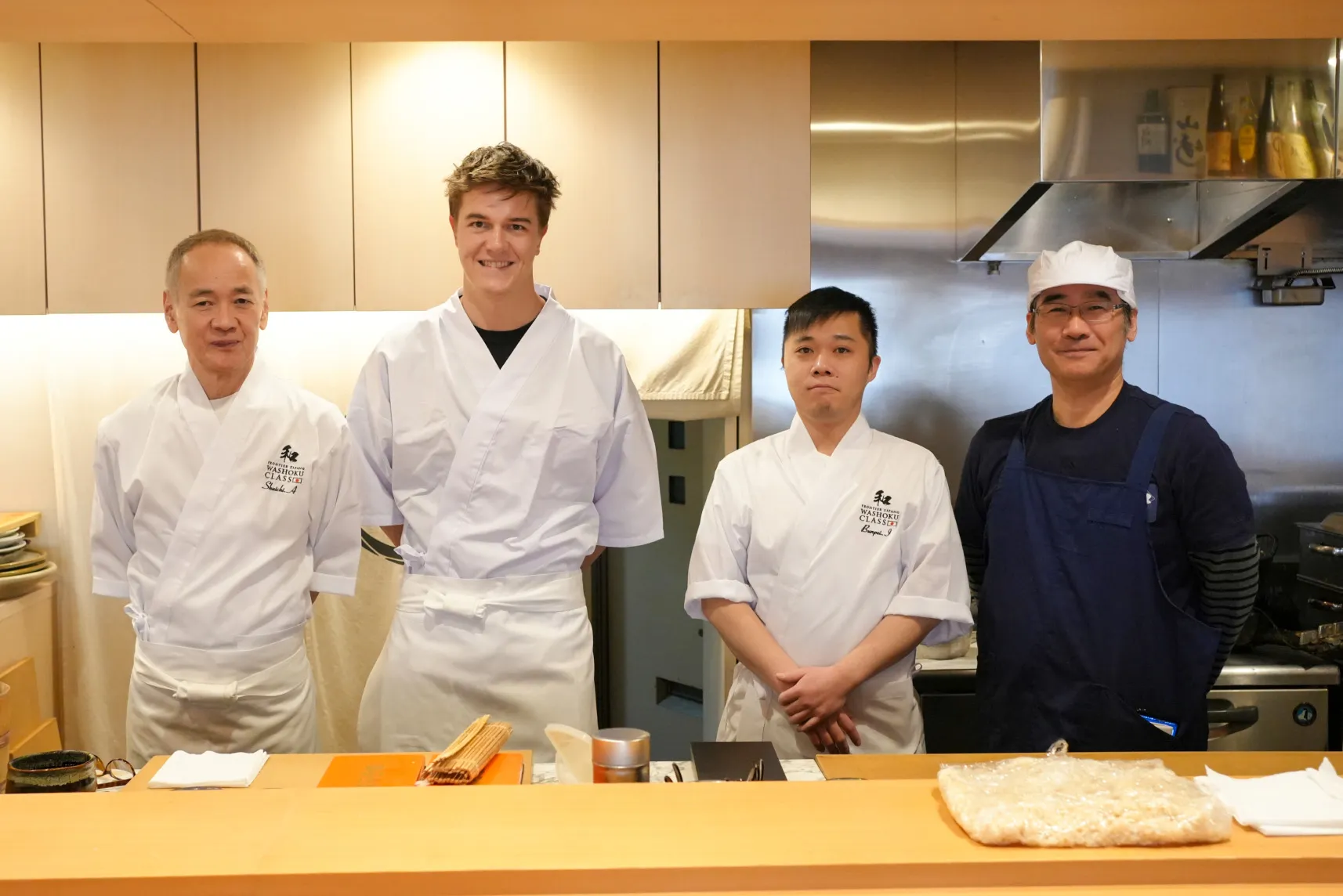Lesson Report: One-Week Private Sushi Course
Feb 10, 2024
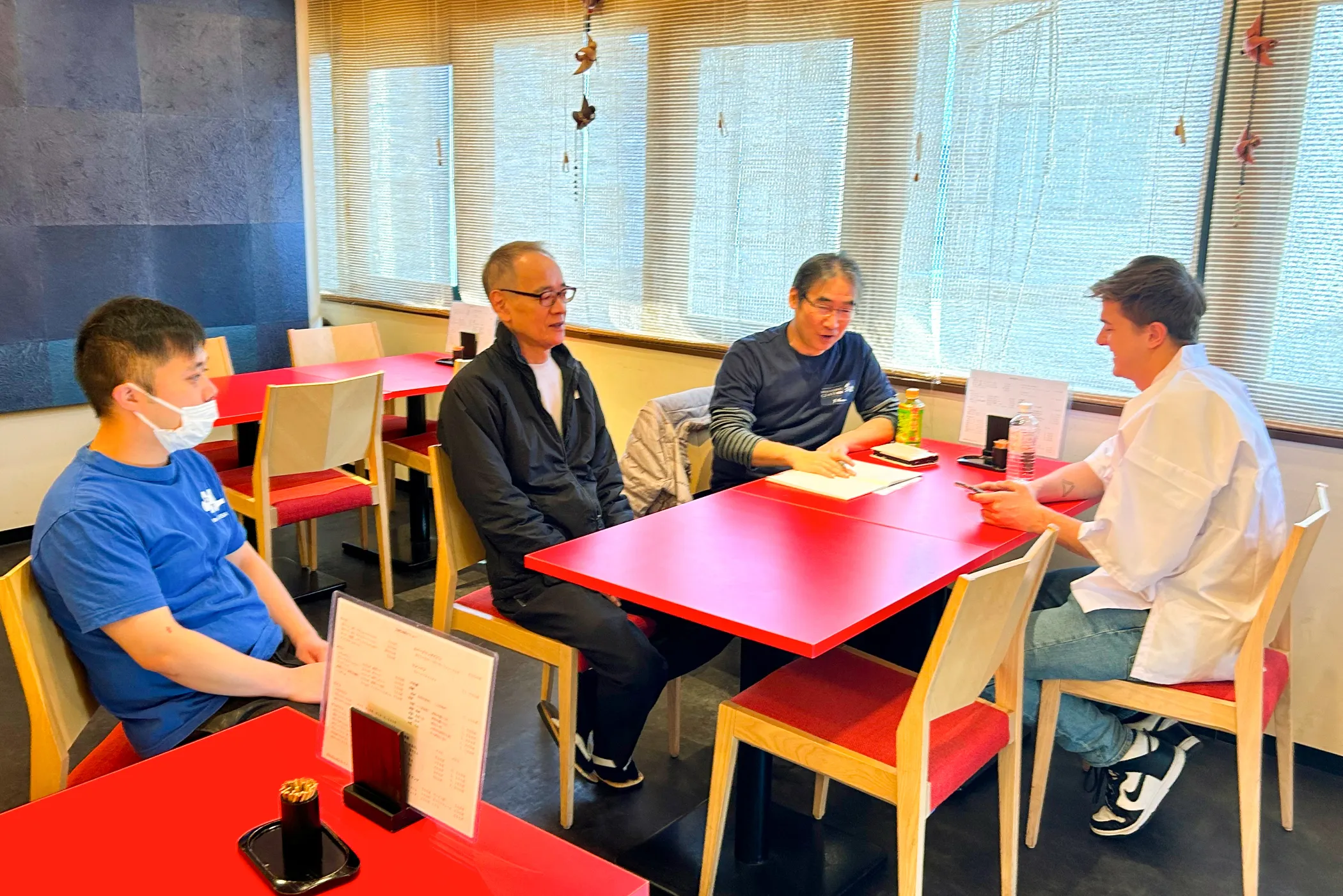
We were thrilled to kick off Jordy’s 1-Week Private Sushi Course at Sushi Suzunari. The course began with an orientation session during which our sushi instructors carefully made a lesson plan tailored to Jordy’s specific goals. Even before arriving in Japan, Jordy had already identified what he wanted to master and the goals he aimed to accomplish. This demonstrated his deep enthusiasm for the art of sushi-making. Our instructors and staff members were equally determined to meet Jordy’s expectations, ensuring that each lesson was conducted with a perfect balance of focus and enjoyment, as is customary at Sushi Suzunari.
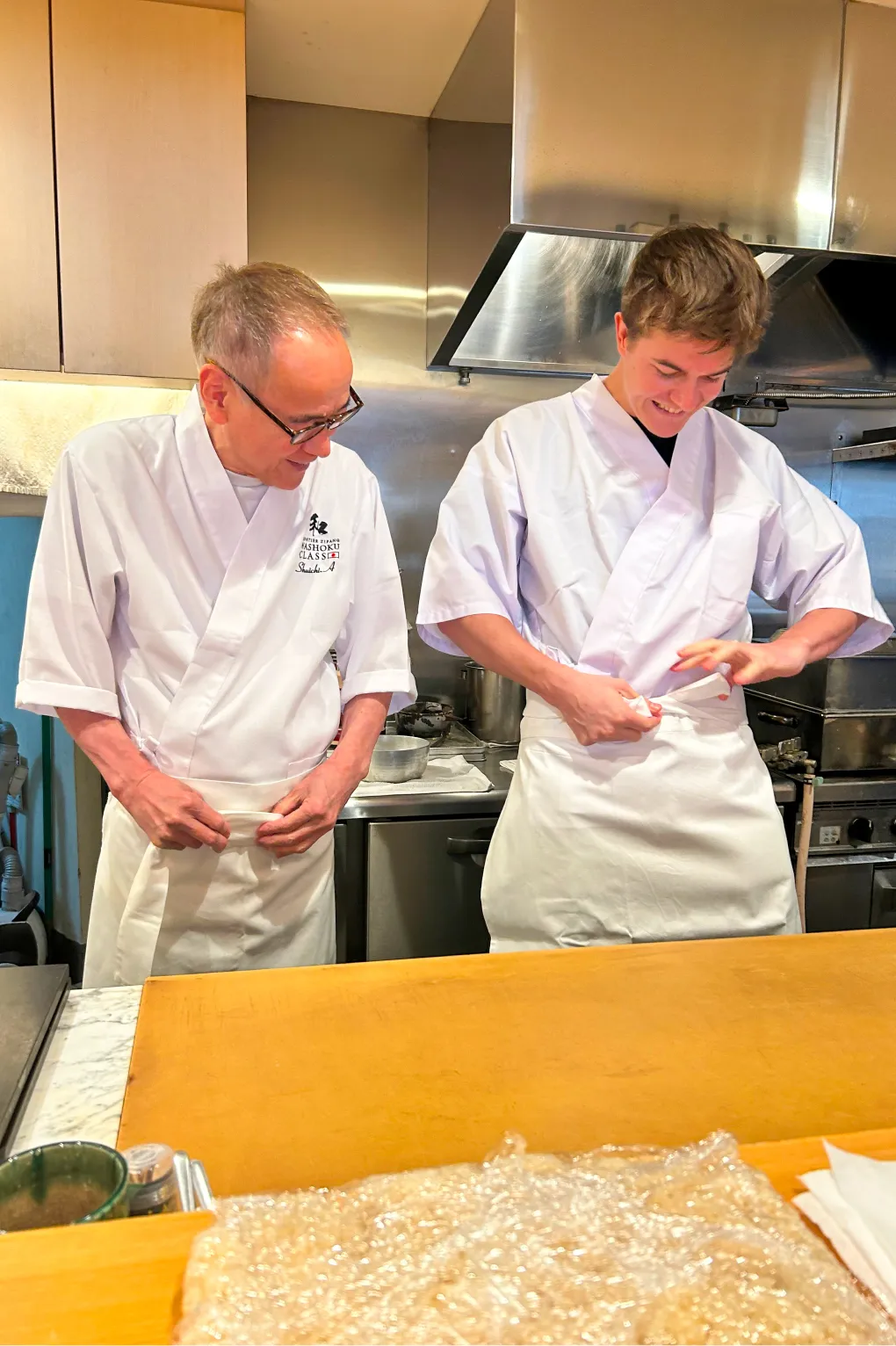
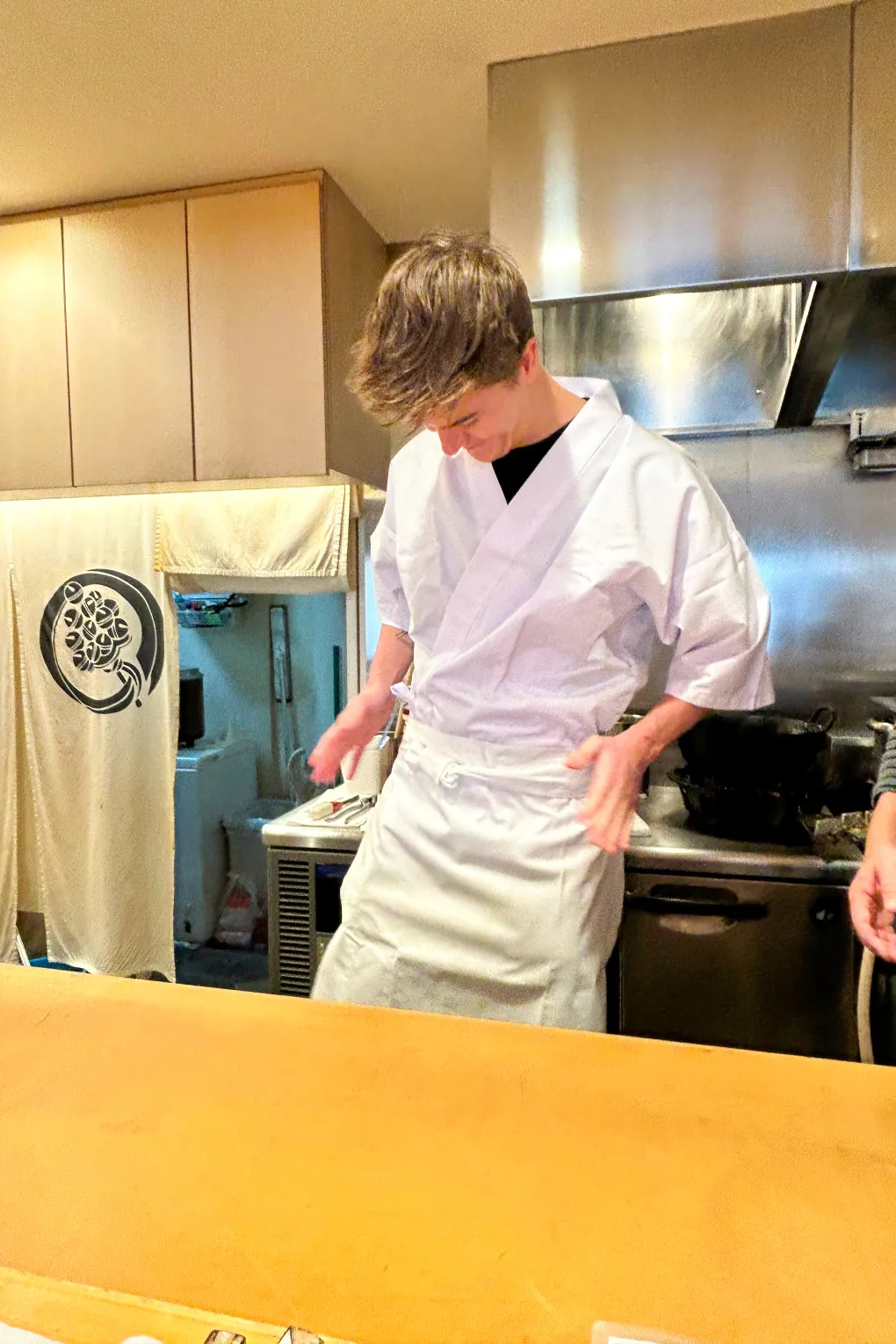
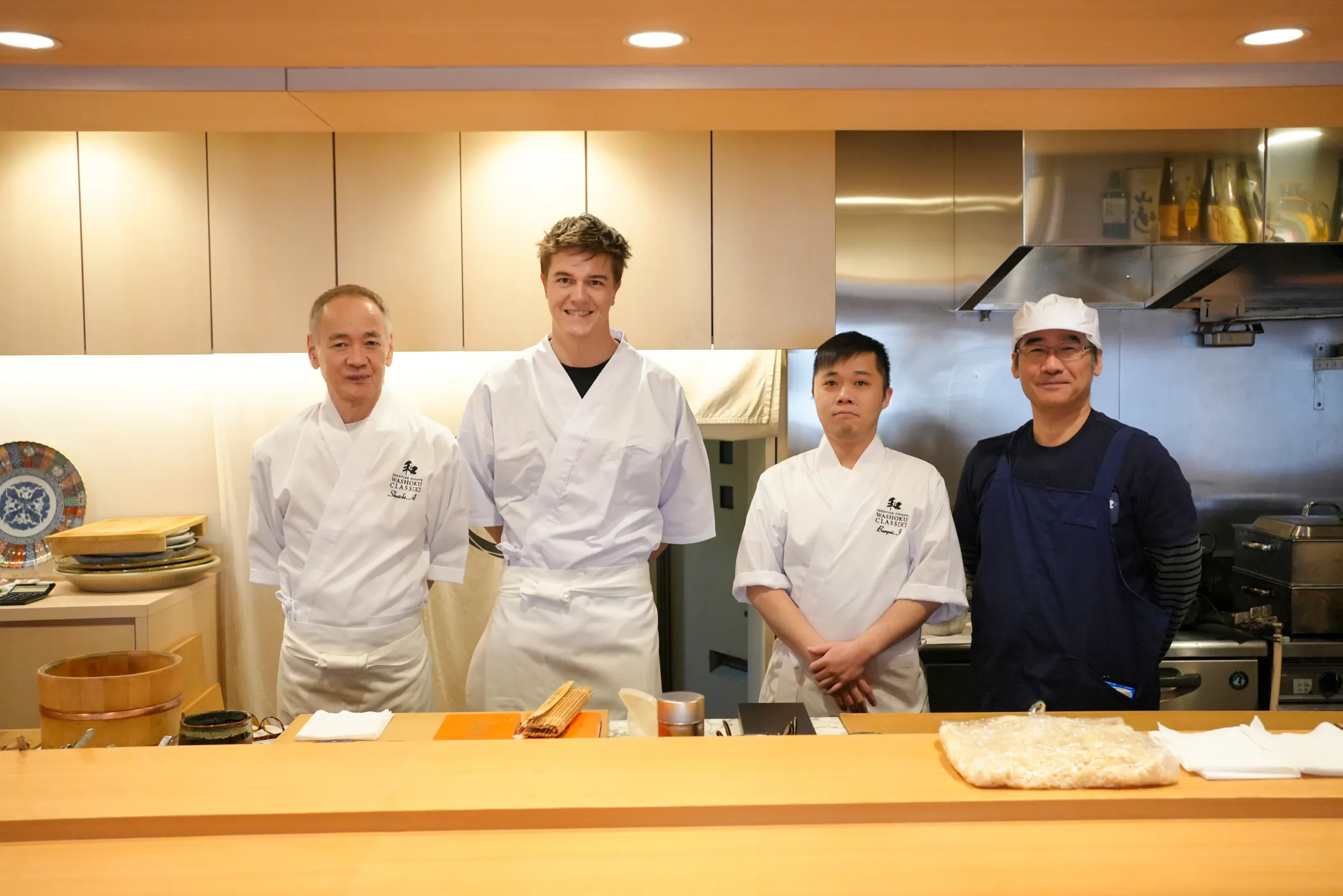
In washoku cuisine, putting on a chef uniform is not just a formality; it’s an essential tradition. Paying attention to even the smallest details, such as the way one ties an apron, holds significance. A hallmark of a skilled chef is not only their culinary expertise but also their ability to wear their uniform with style and grace. Emphasizing a professional appearance and grooming is very important, serving as the foundation for a chef’s credibility and respect.
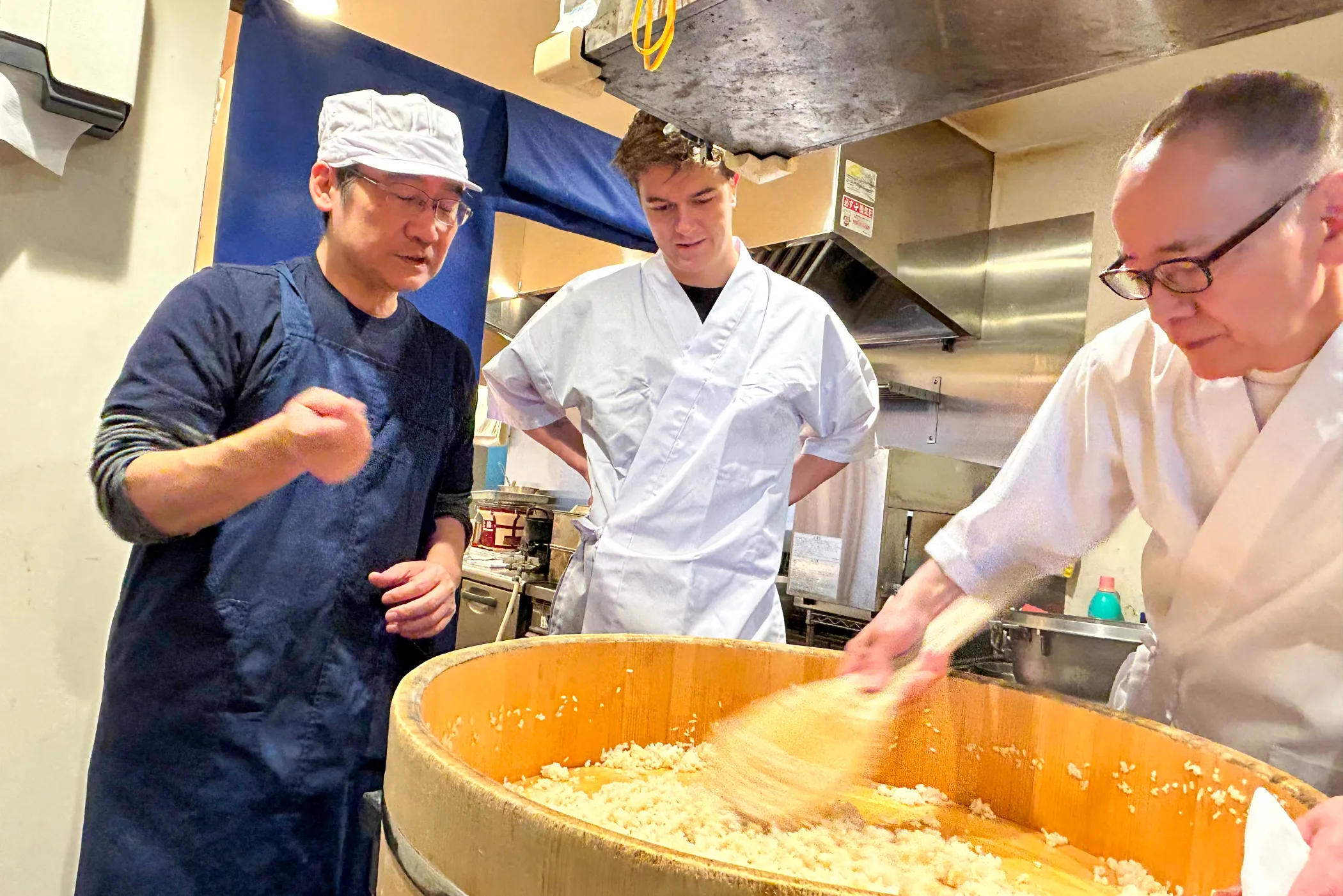
Day 1 started with the meticulous preparation of sushi rice. Under the expert guidance of our instructor, Jordy was introduced to the intricacies of this essential element of sushi. The instructor provided thorough demonstrations, walking Jordy through each step with precision and clarity. With the instructions given on Day 1, Jordy eagerly anticipated taking on the preparation process himself, under the continued guidance of our instructor, starting the next day. Once the rice is cooked, it needs to be stirred and seasoned with vinegar. The key to crafting top-quality sushi rice lies in evenly distributing the vinegar throughout the rice and swiftly stirring it, taking care not to mash the individual grains. Additionally, it’s crucial to taste-test the rice daily to maintain a consistent flavor profile, especially considering fluctuations in temperature and humidity from day to day.

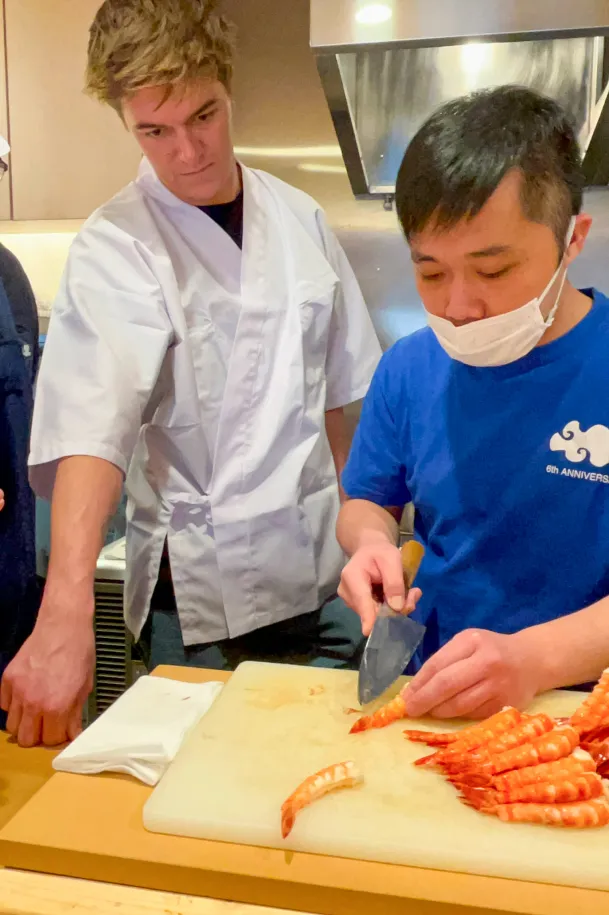

Then Jordy worked alongside the instructor, carefully and swiftly preparing shrimps for sushi. They focused on mastering key points and techniques crucial to the art of sushi-making.
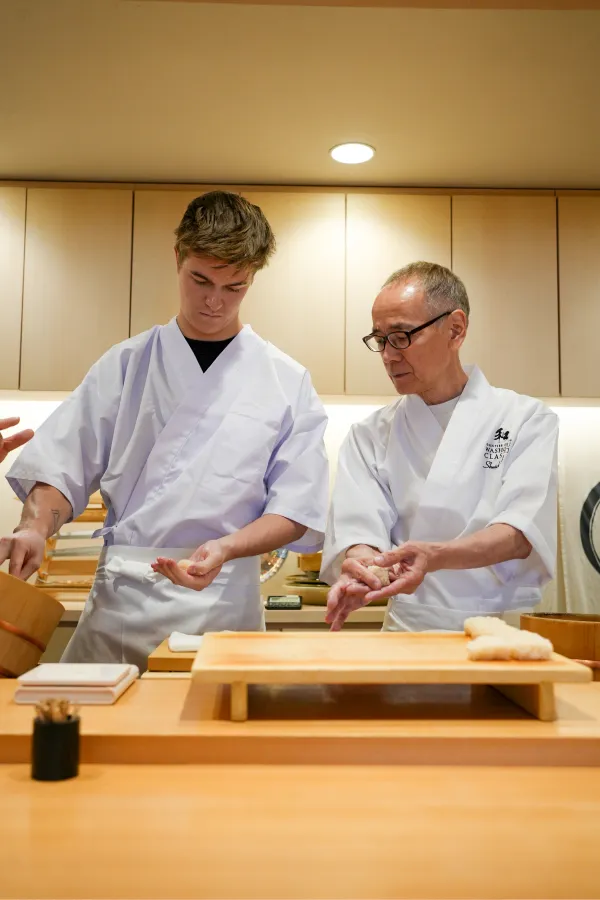
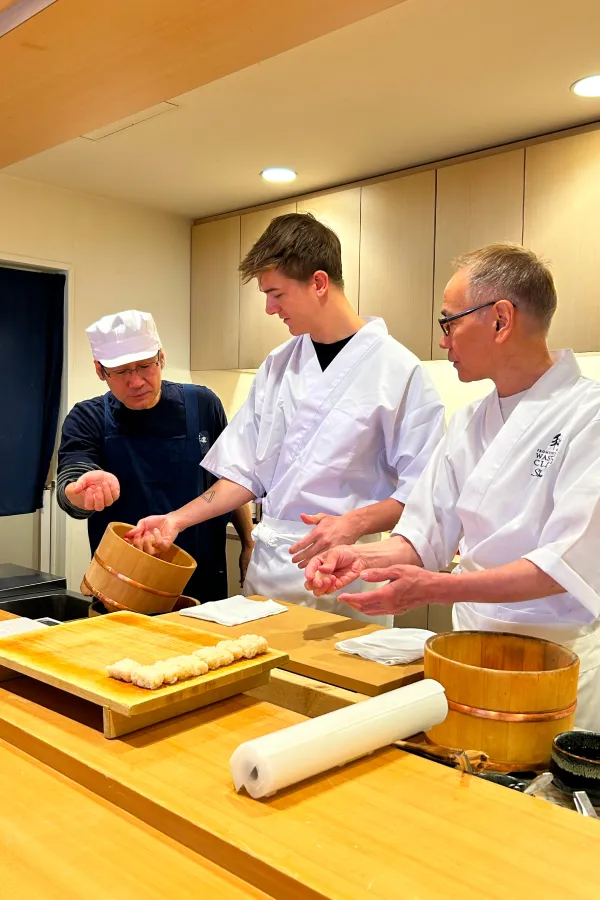
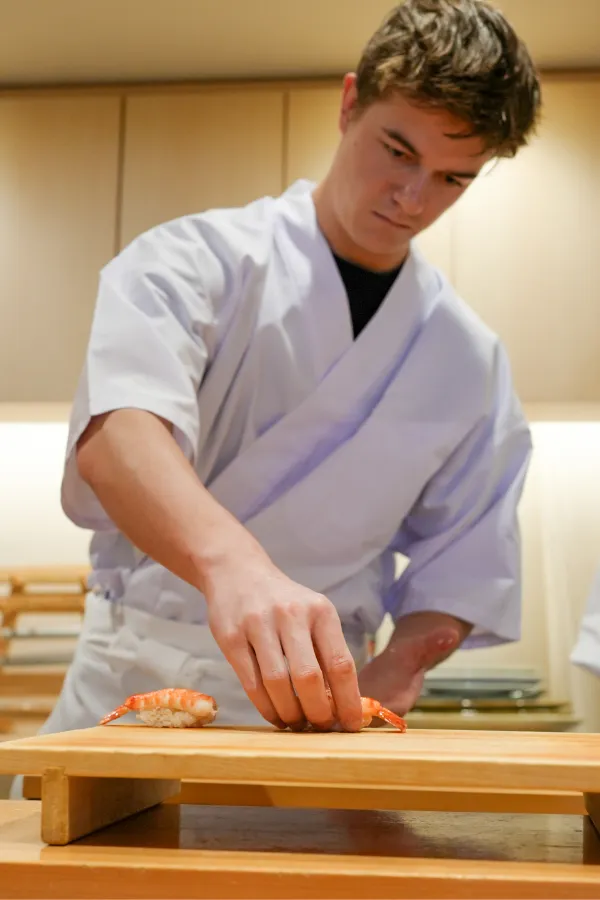
Next up was the practice of crafting nigiri. Jordy received advice from the instructor on how gently and slowly he should handle the sushi rice to shape it perfectly. Although he admitted to having limited experience in crafting nigiri, he demonstrated a natural talent, shaping the sushi rice without excessively wetting his hands or encountering issues with rice sticking on his hands. We eagerly anticipated witnessing his progress over the remaining four days.
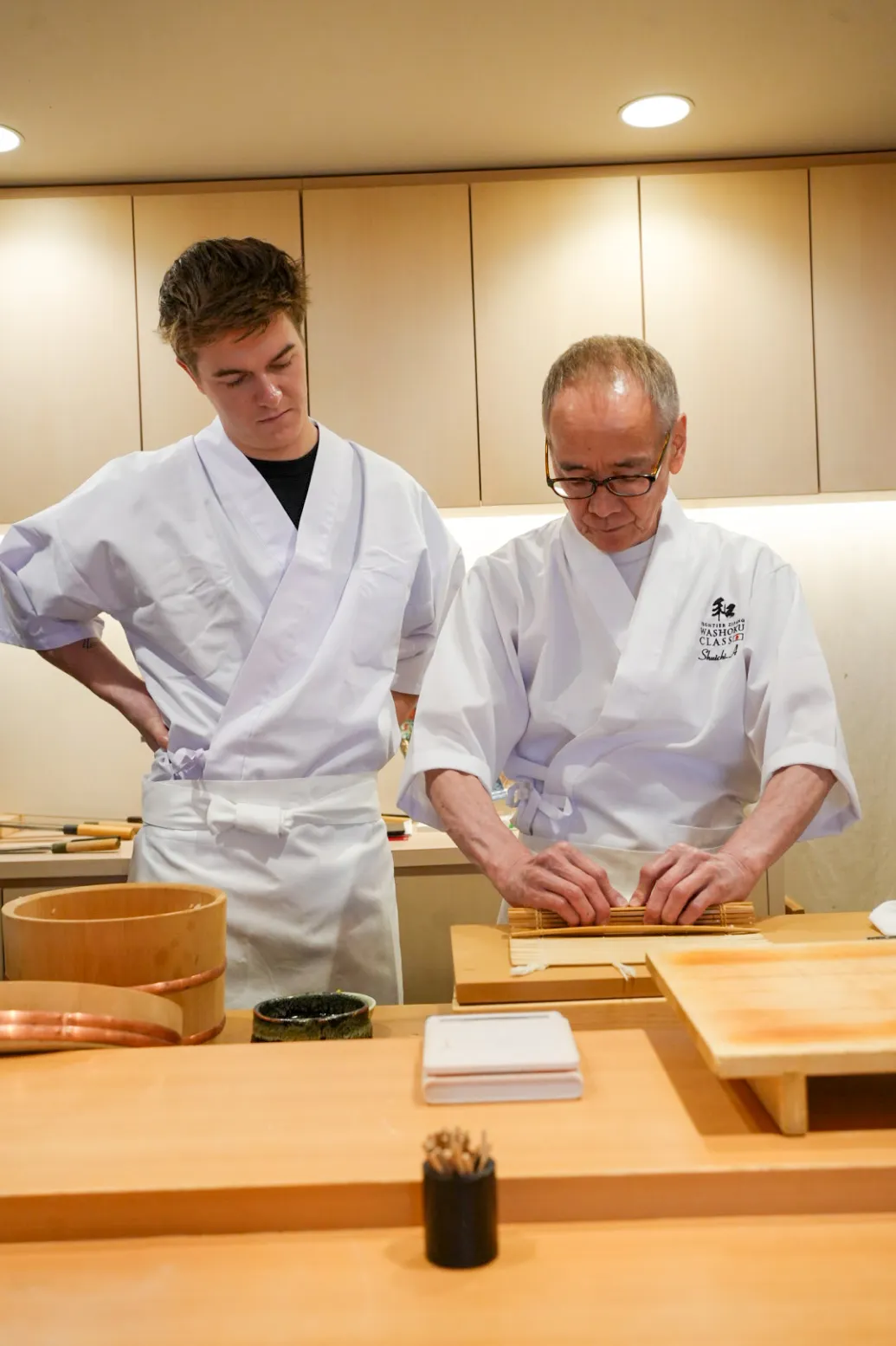
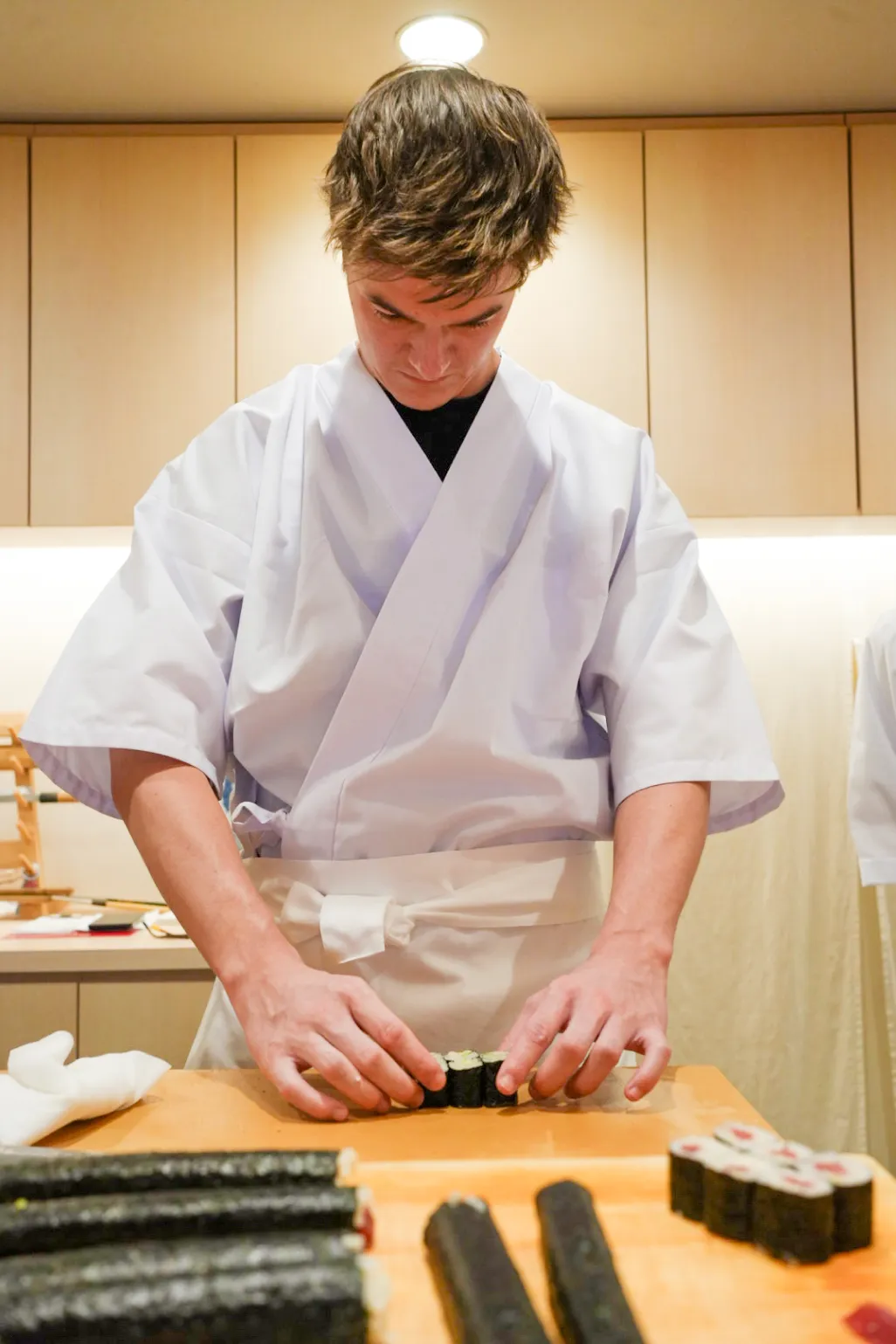
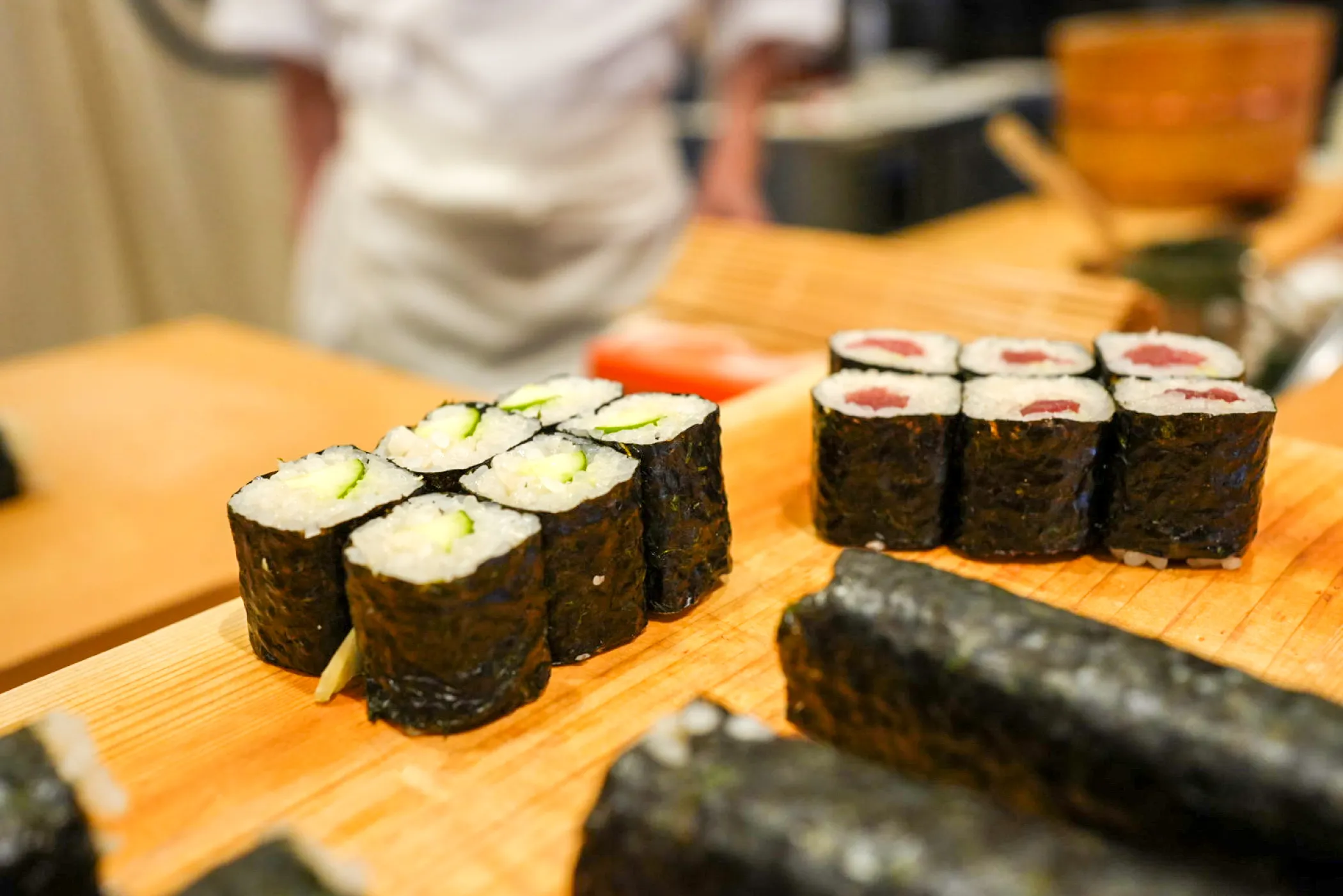
Day 1 concluded with a brief lecture on ‘hosomaki’ (thin sushi rolls), setting the stage for an intensive practice session the following day. Although Jordy may have felt a bit tense on the first day, he would become more relaxed and fully enjoy delving into the techniques and key points in the days to come.
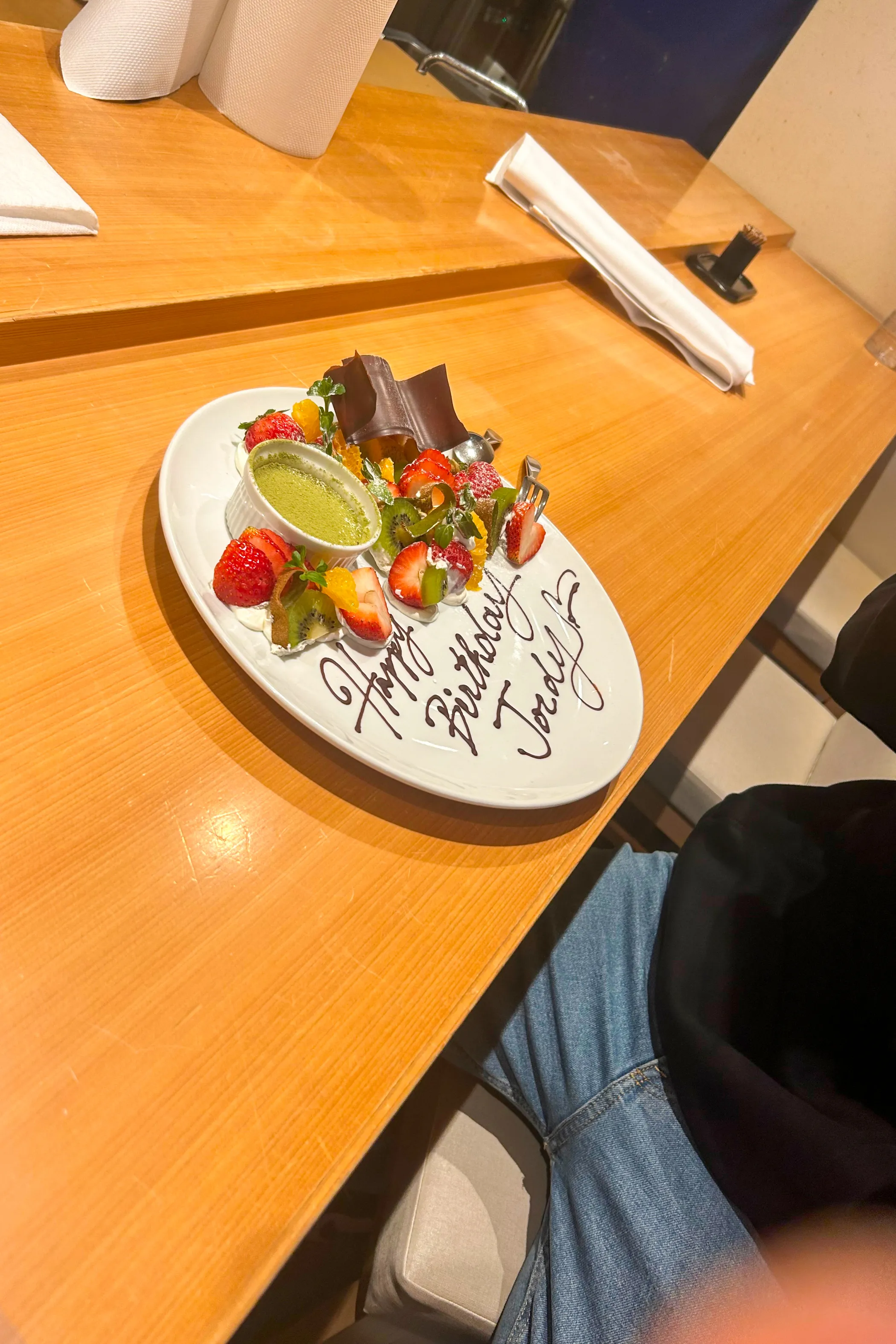
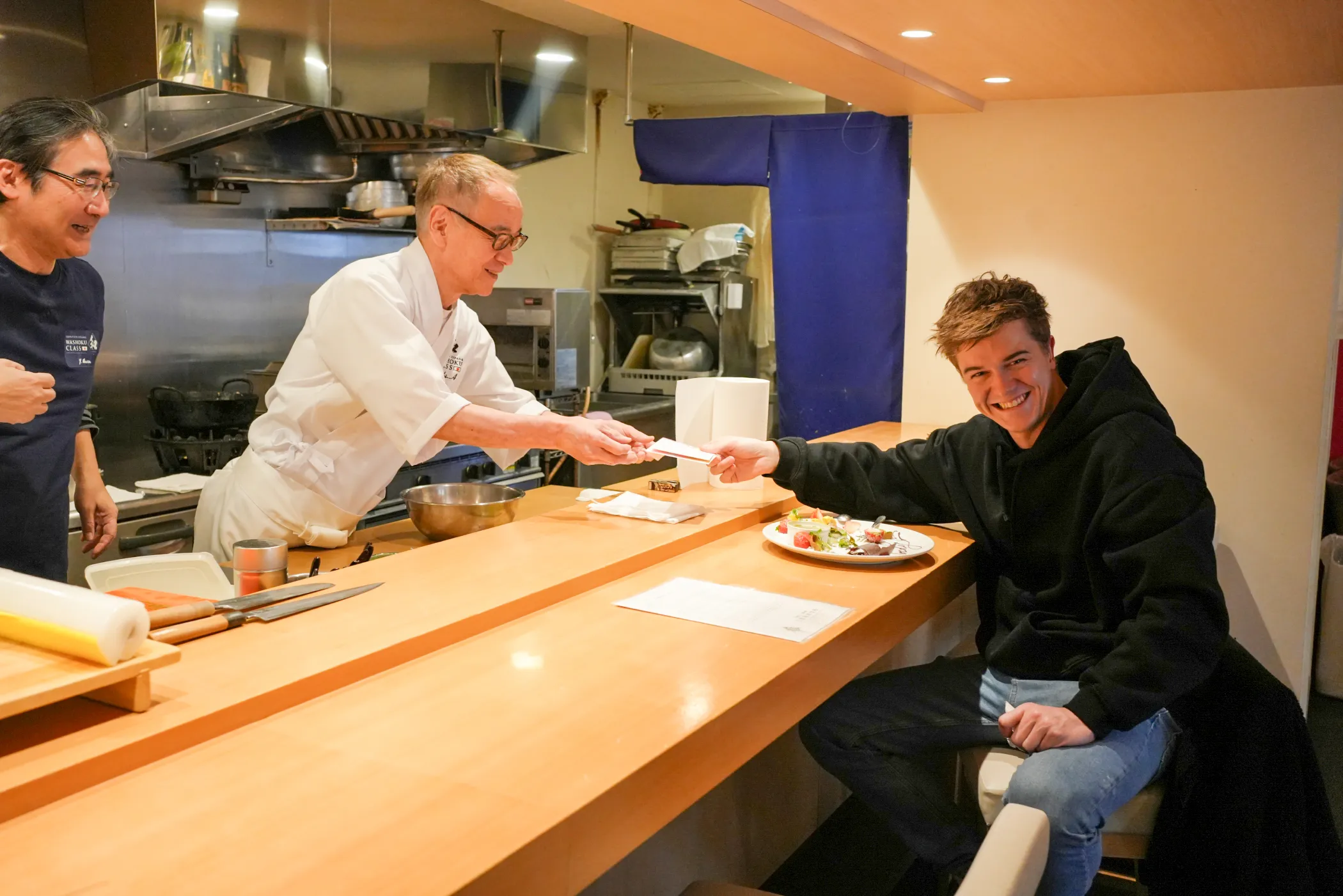
After the lesson, Chef Obata, the instructor of FZWC’s Izakaya Course in Yokohama, and the Wa Sweets Course, surprised Jordy with a birthday fruit and sweets plate, as he had celebrated his birthday the previous week!
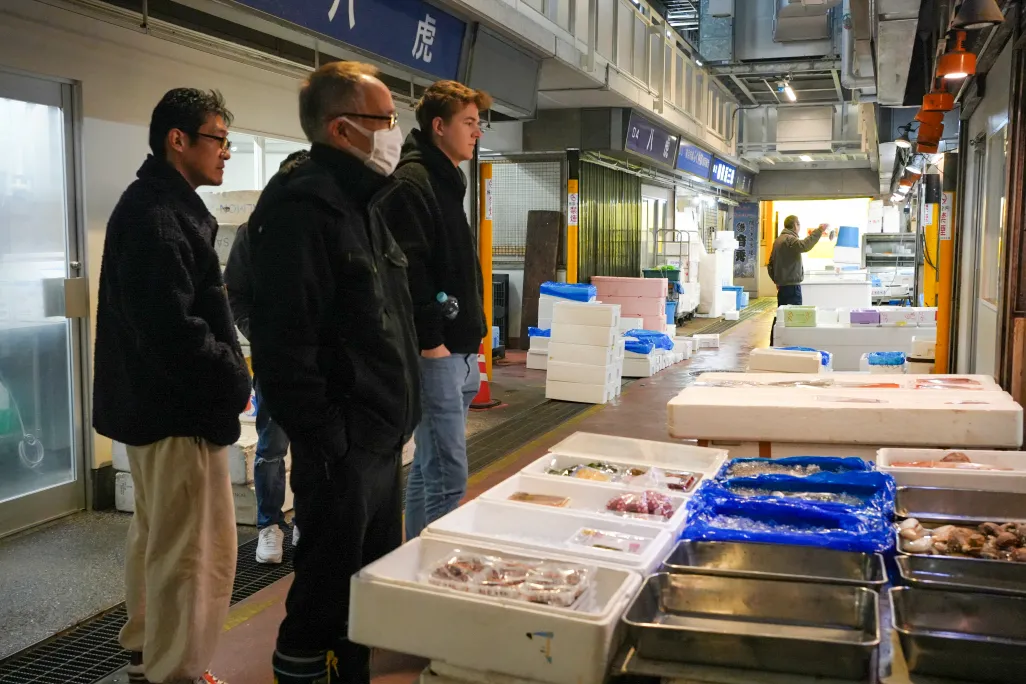

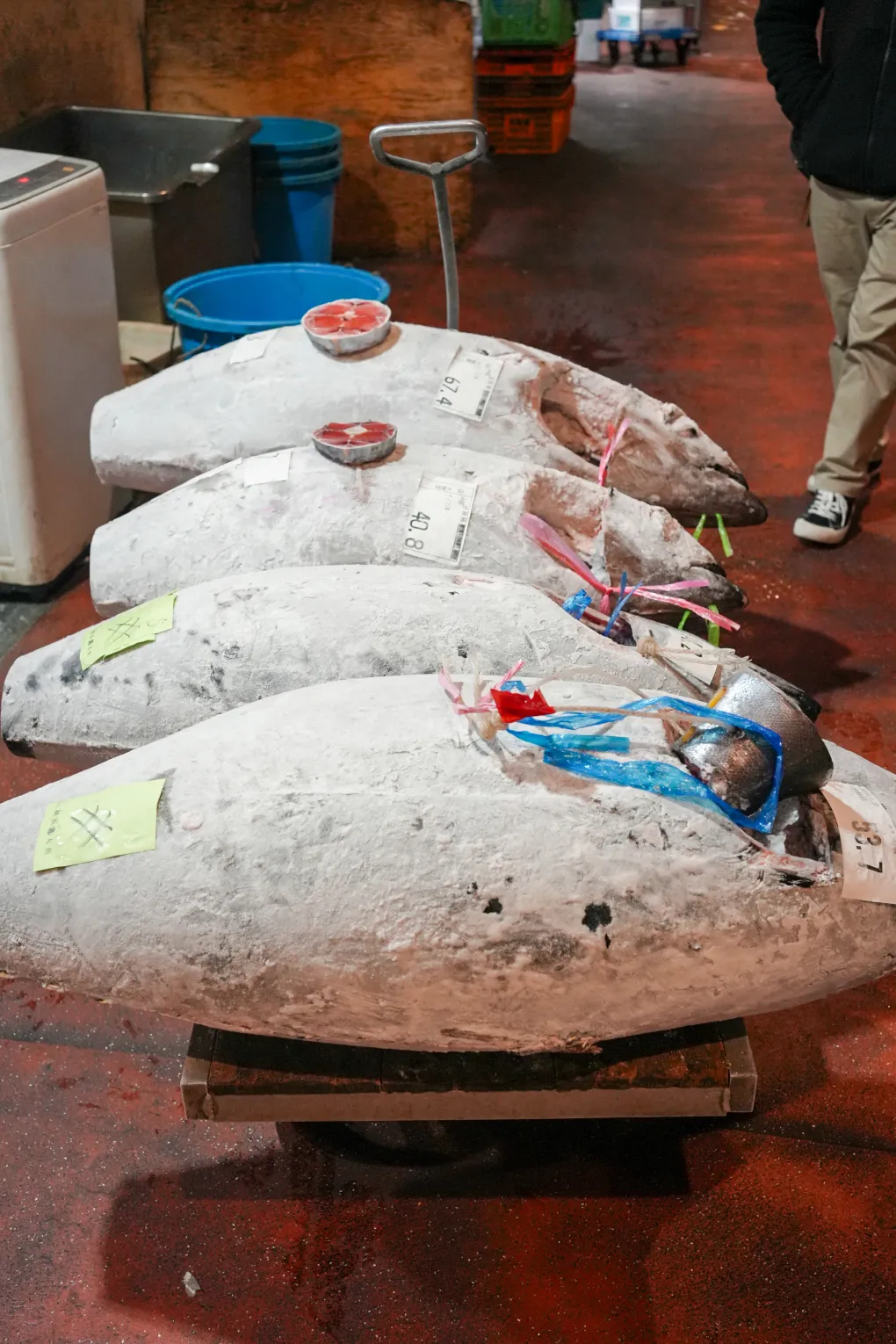
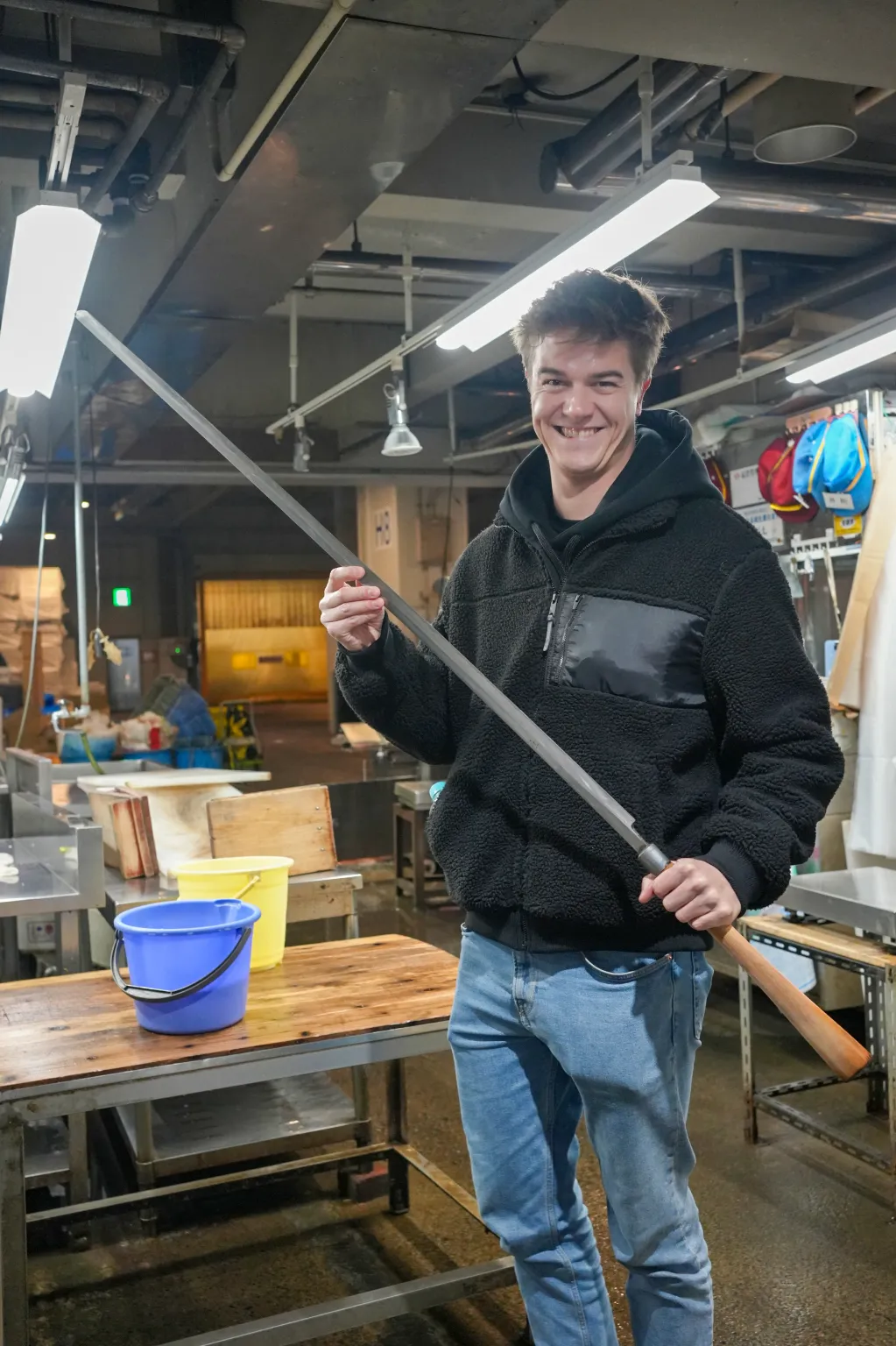
Day 2 started with a field trip to the Yokohama City Central Wholesale Market. Jordy appeared fascinated by the unique atmosphere of the Japanese market and the array of fish, which he rarely encounters in his own country. Additionally, he had the opportunity to handle a knife specially designed for cutting up a whole tuna.
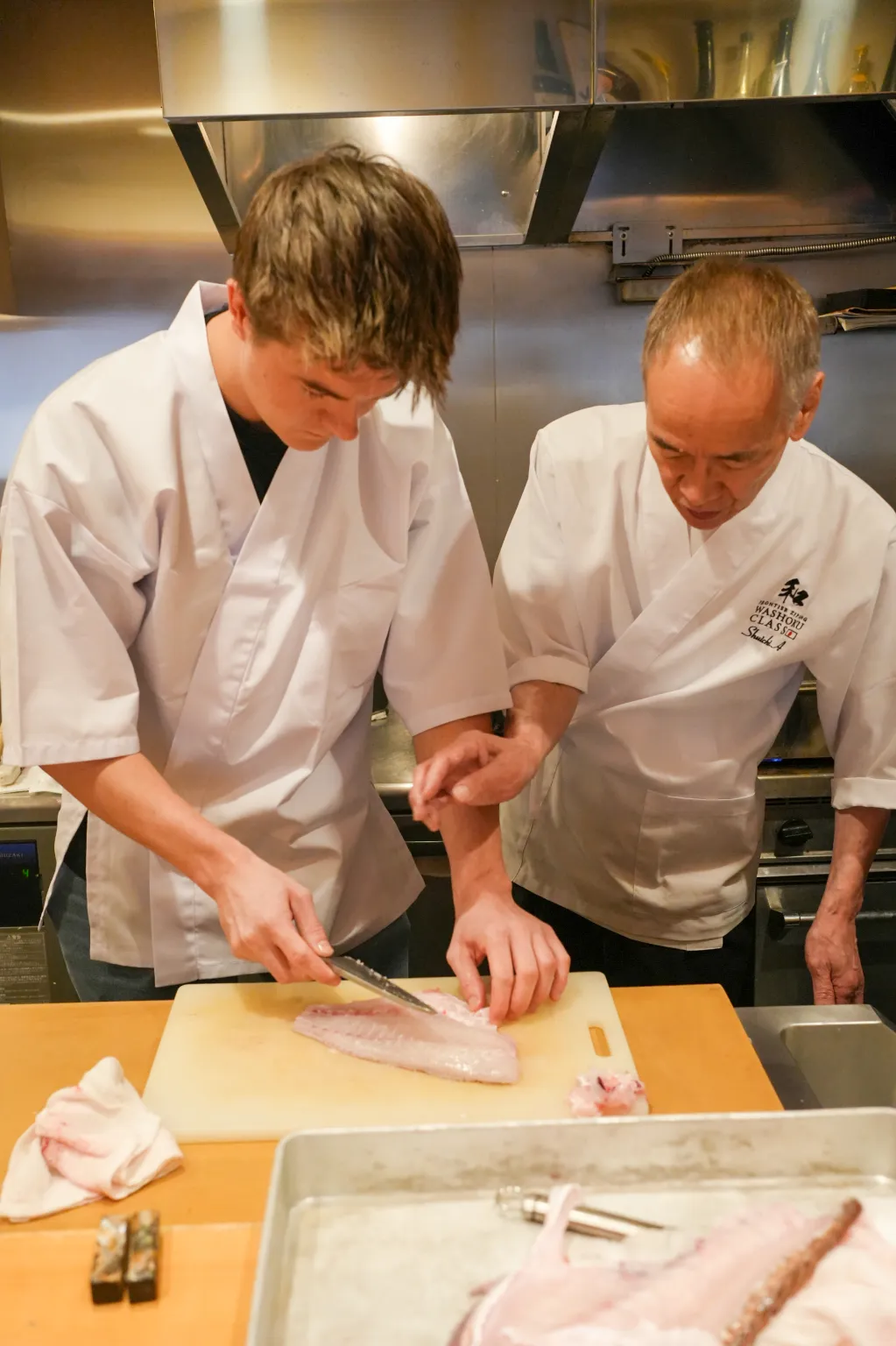
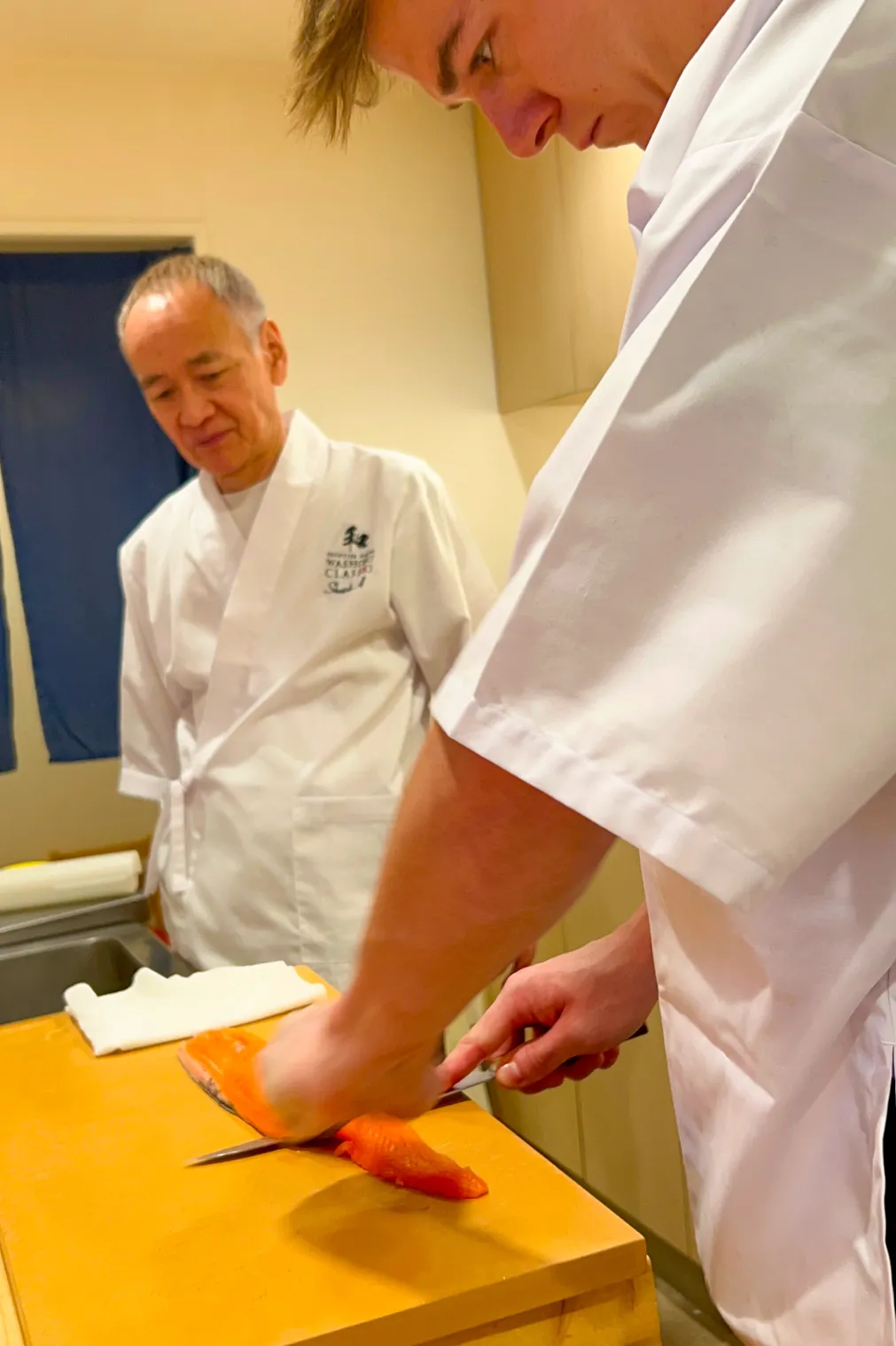
While waiting for the rice to cook, Jordy learned the art of filleting fish such as ‘yashiomasu’ (rainbow trout) and ‘madai’ (sea bream), as well as preparing shrimps, as he had done the previous day.
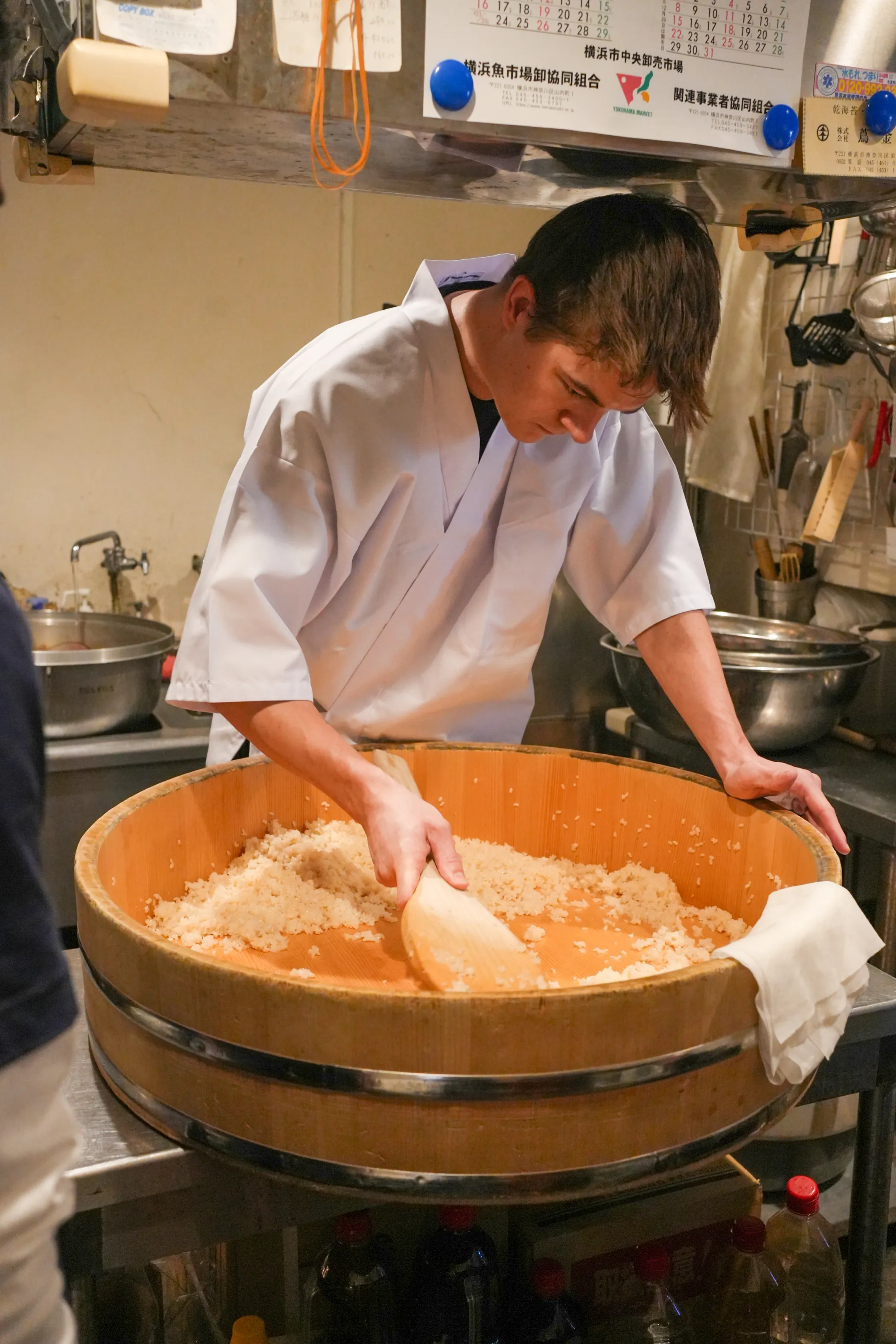
Starting from the second day onward, Jordy would be responsible for cooking rice and preparing sushi rice daily under the thorough guidance of the instructor.
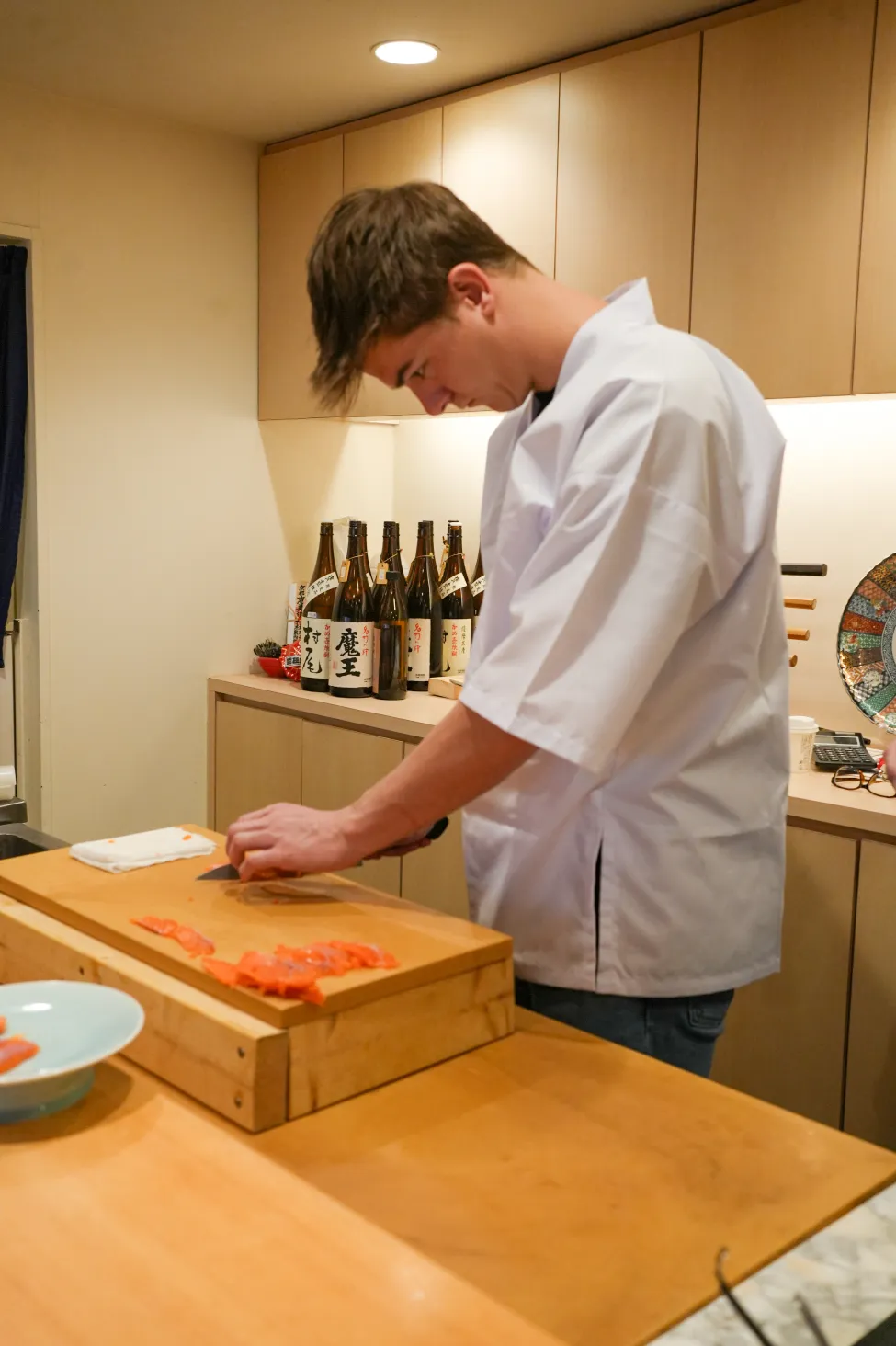
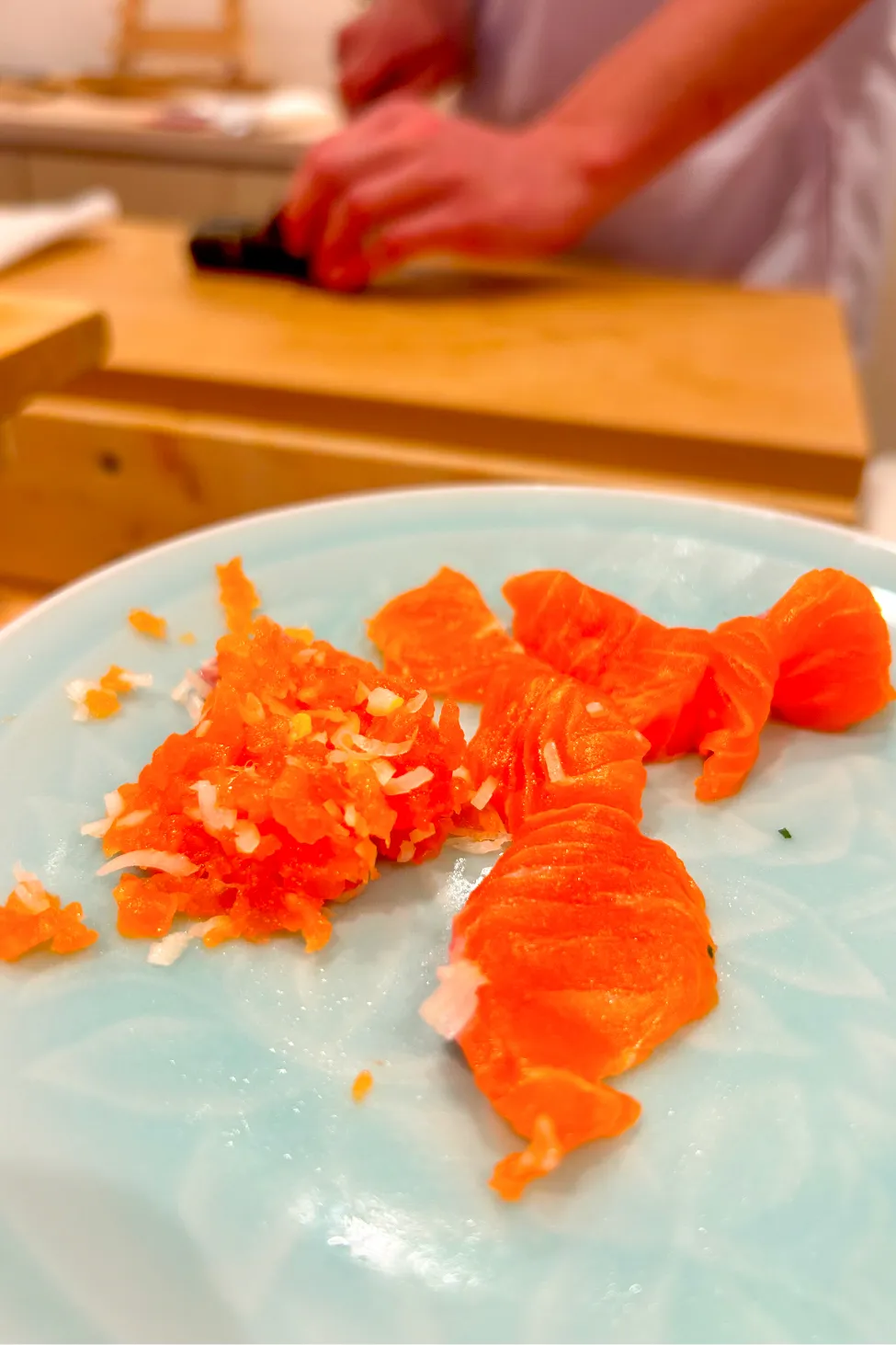
The next session focused on slicing ‘yashiomasu’ (rainbow trout) for sashimi and sushi. Surprisingly, the method of slicing fish differs between sashimi and nigiri. Jordy learned various techniques, including the presentation of sashimi on a plate.
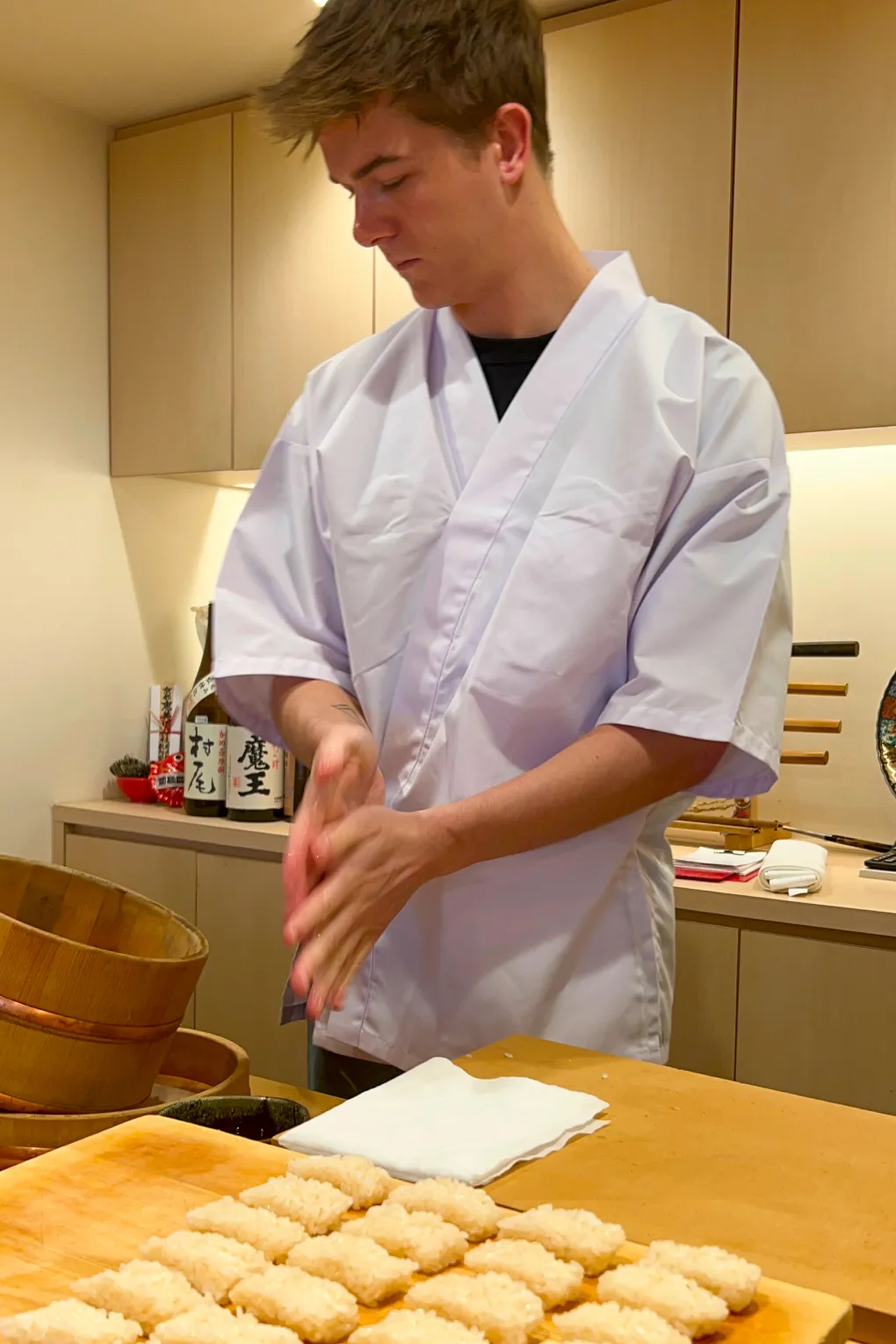

Following that is an intensive practice session crafting sushi rice balls for ‘gunkan’(battleship rolls). Mastering this art begins with learning the proper technique, followed by repetition until it becomes second nature. With only one week to practice, Jordy crafted dozens of sushi rice balls. This approach reflects the ethos we embrace at FZWC. Next, he had a practice session crafting nigiri with ‘yashiomasu’ (rainbow trout) and ‘hosomaki’ (thin sushi rolls). He showcased considerable improvement compared to the previous day.
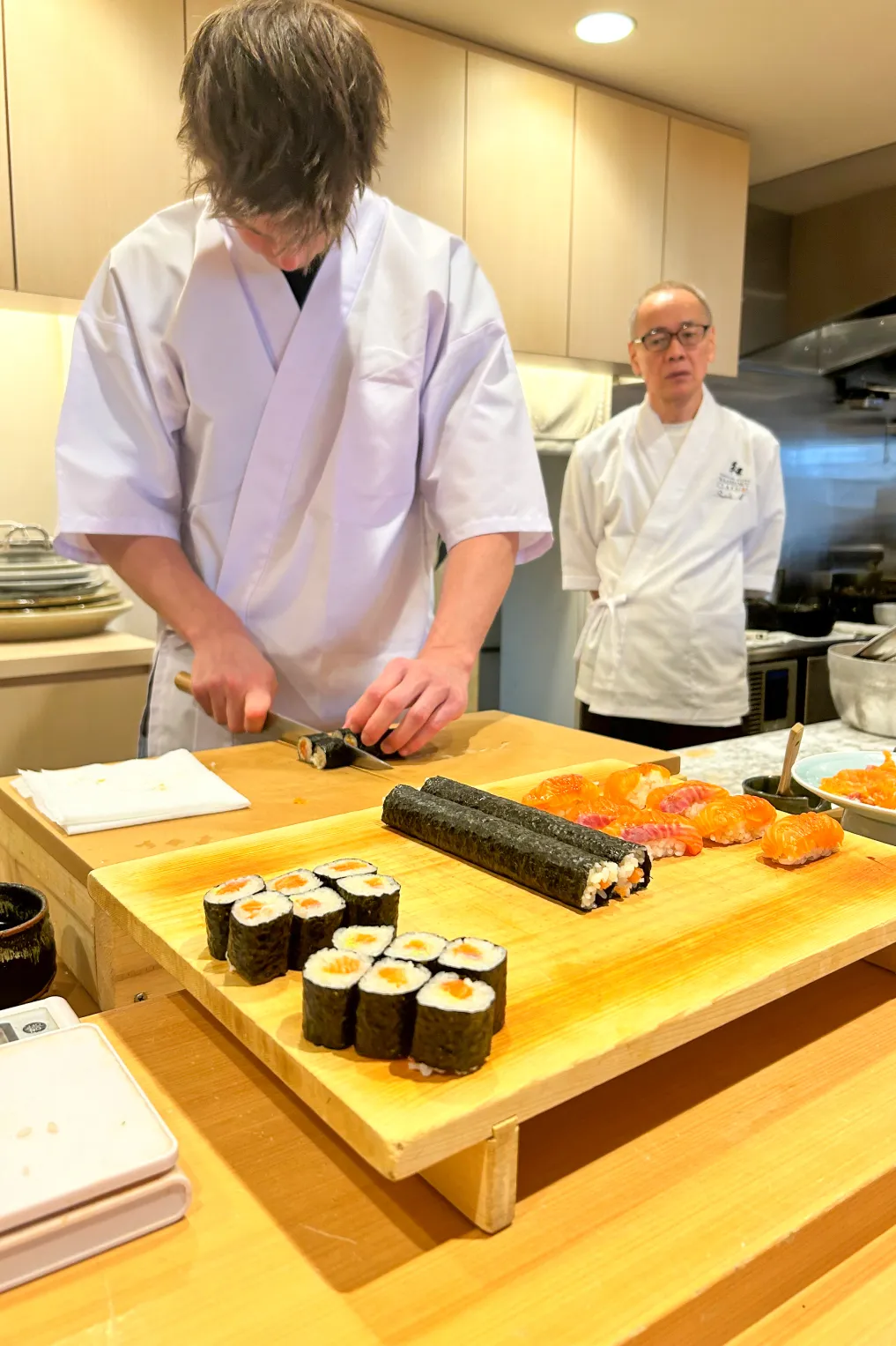
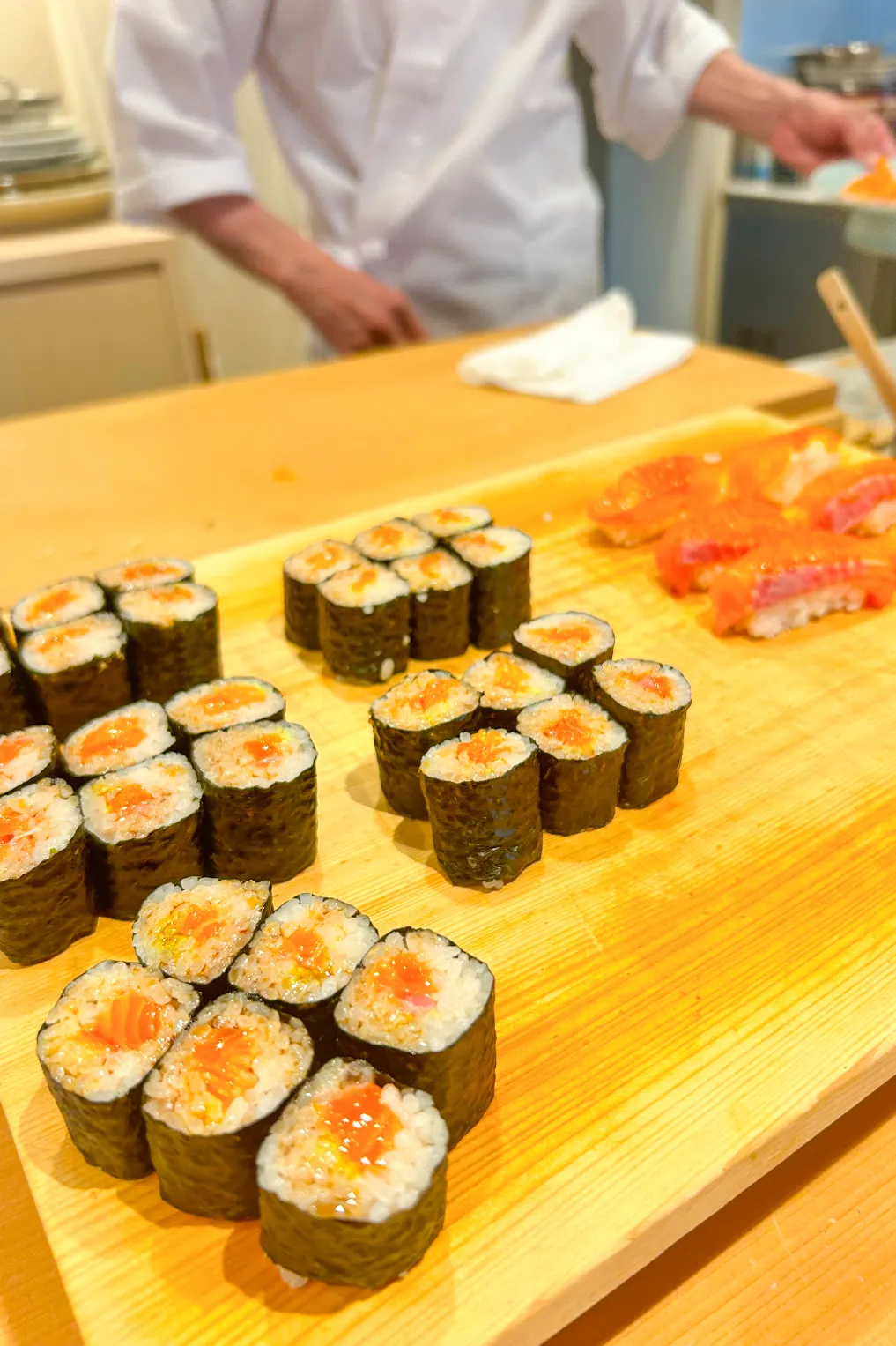
Every step of crafting thin sushi rolls, from spreading the sushi rice over the nori to rolling and tightening, appeared challenging. However, we eagerly anticipated remarkable progress in his skills over the remaining days.
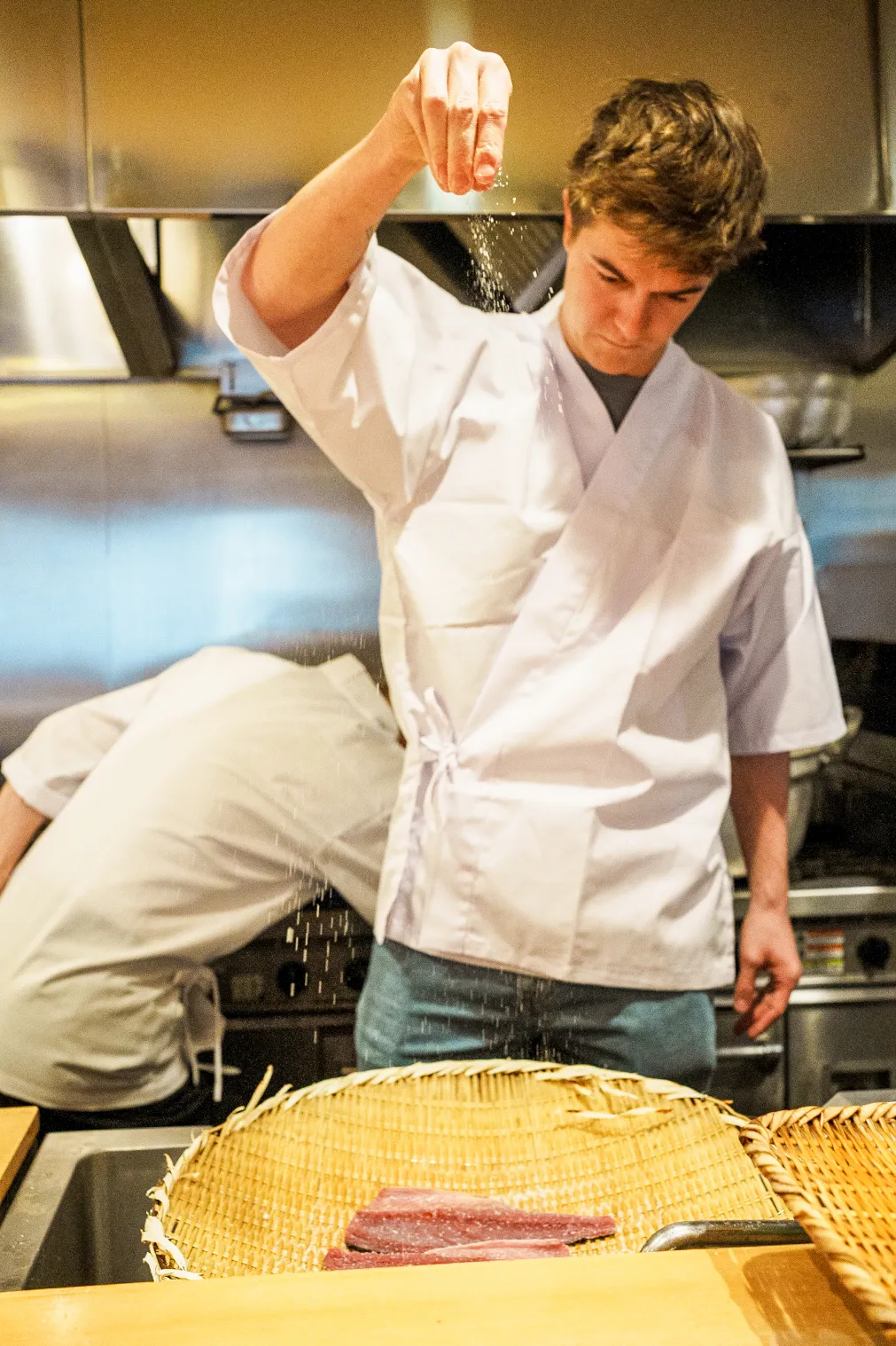
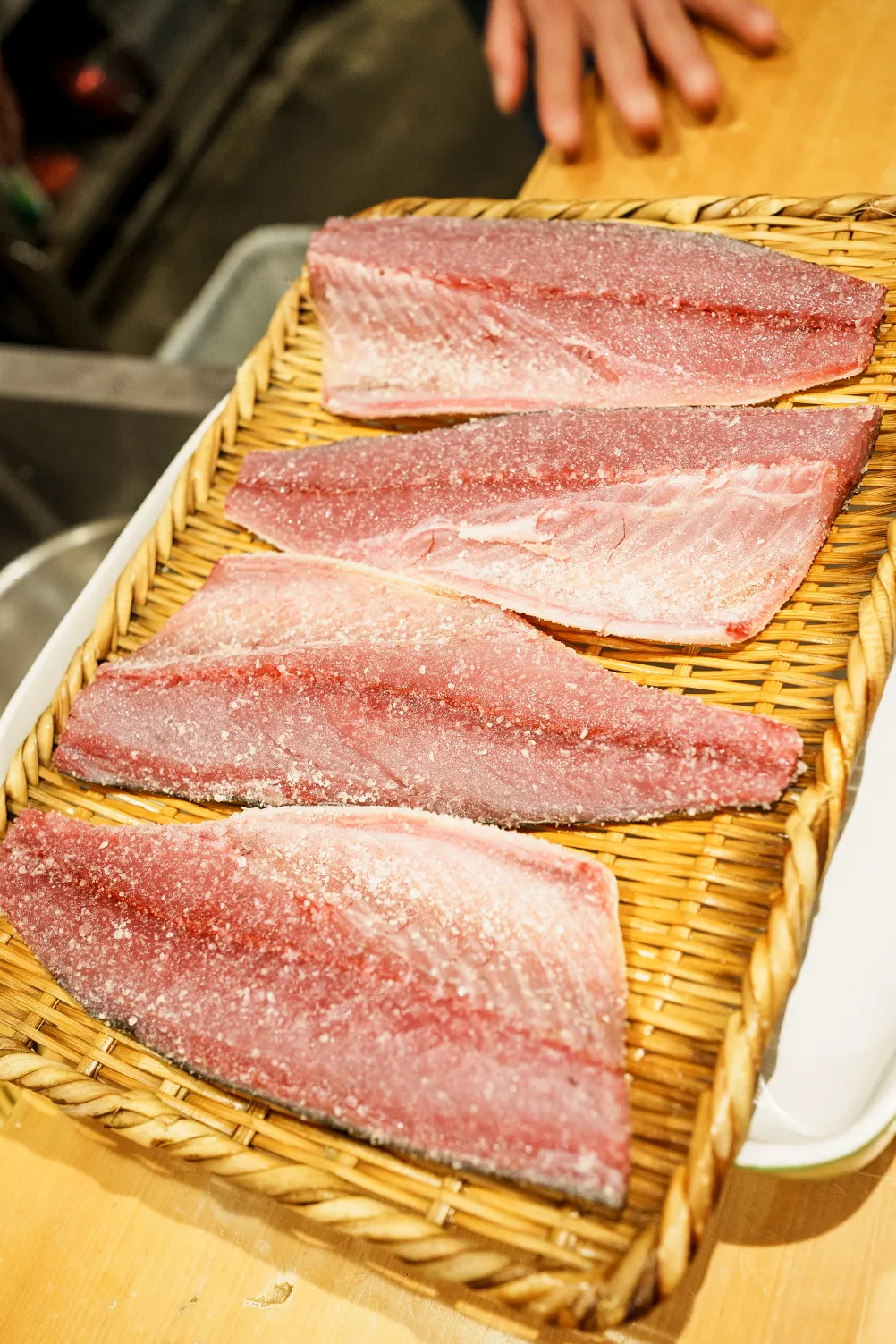
The first topic of Day 3 was filleting ‘saba’ (mackerel) and preparing ‘shime-saba’ (vinegared and salted mackerel). Jordy showed keen interest in the technique and asked many questions. He learned that the amount of salt to sprinkle varied depending on the type of fish, a detail that would prove useful not only in sushi-making but also in preparing other fish dishes in his own country.
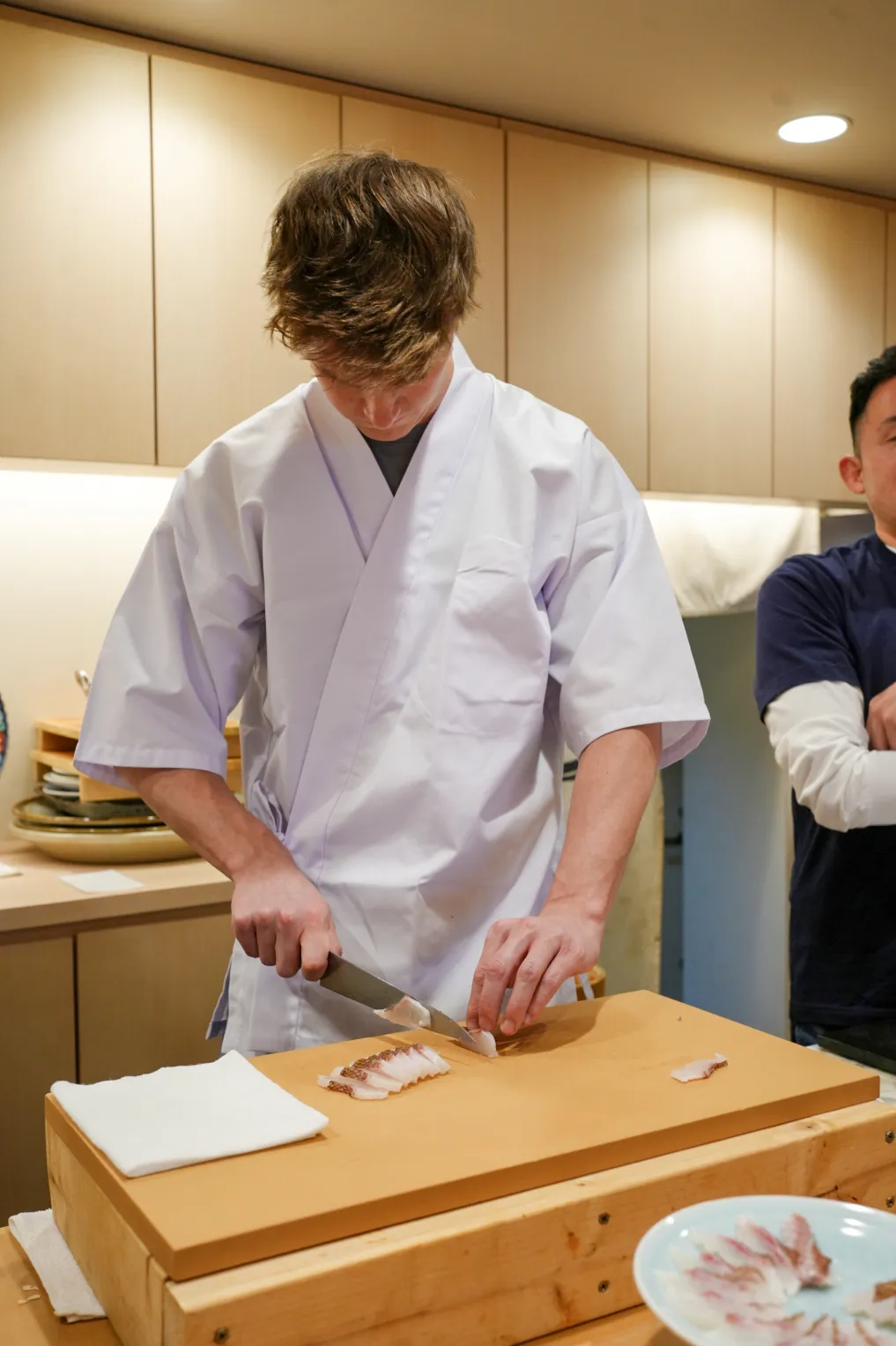
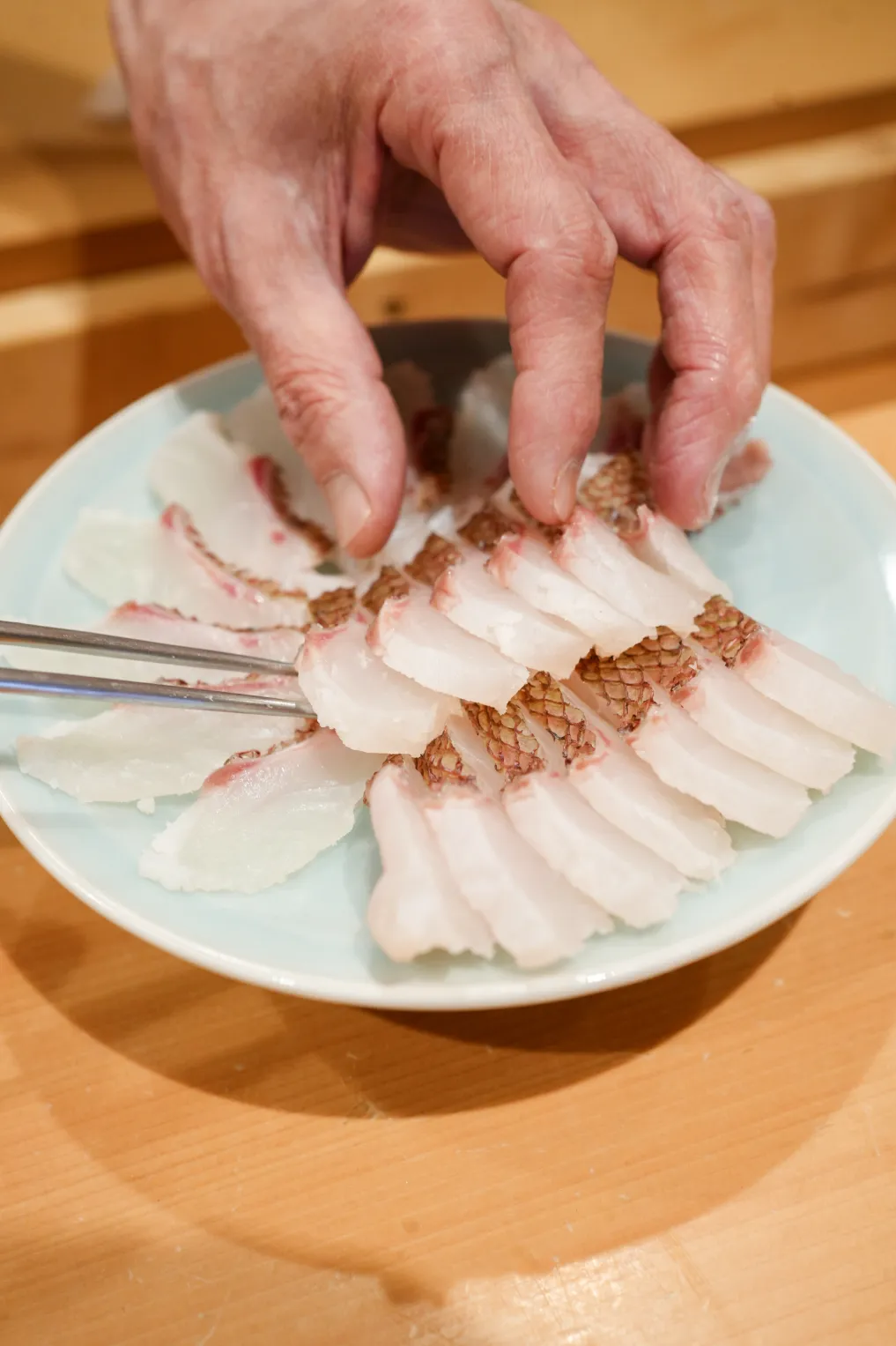
After that, he learned how to fillet ‘madai’ (sea bream) for sashimi and ‘yashiomasu’ (rainbow trout) for nigiri. The technique of filleting also varies depending on the type or size of fish.
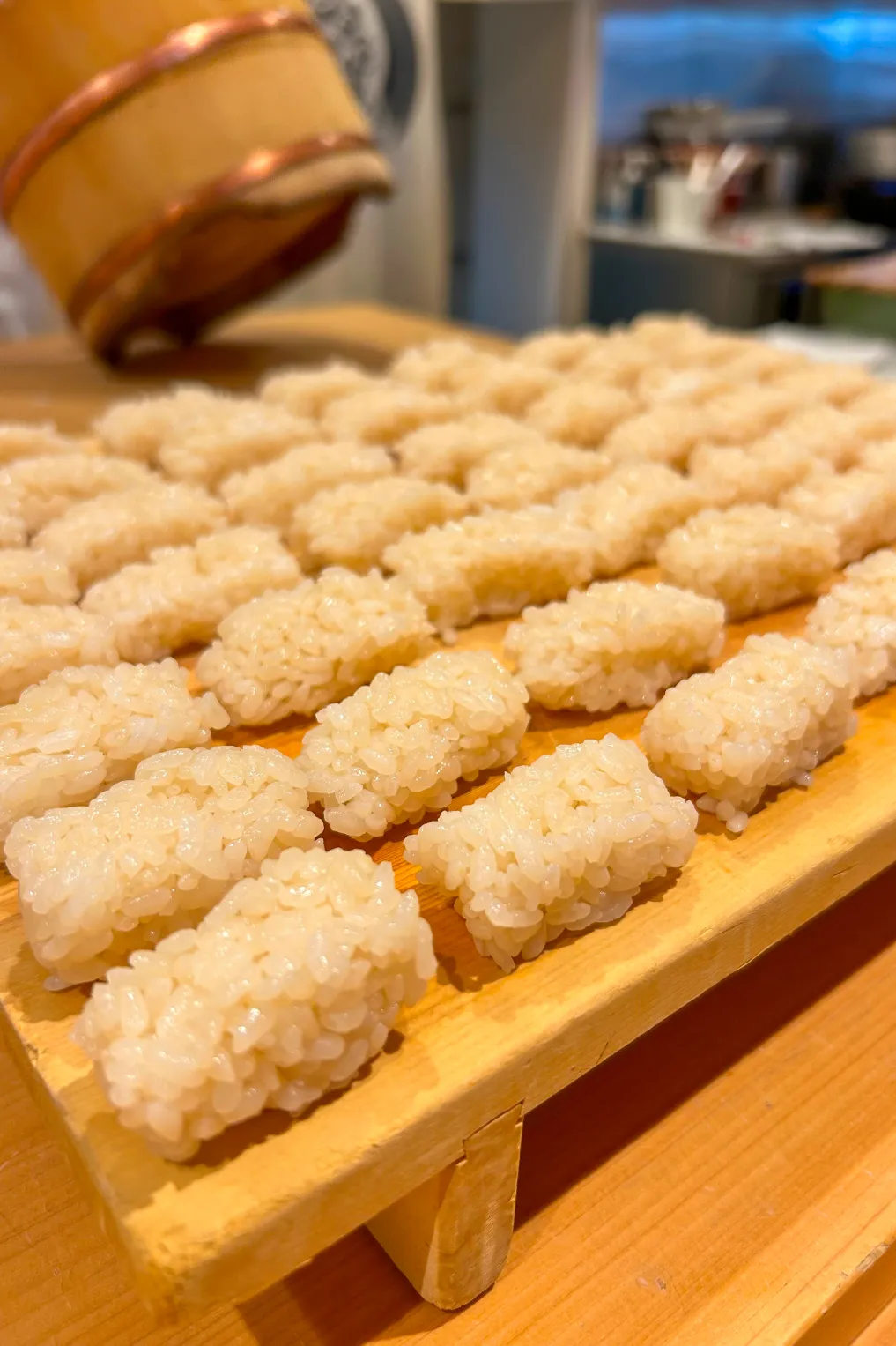
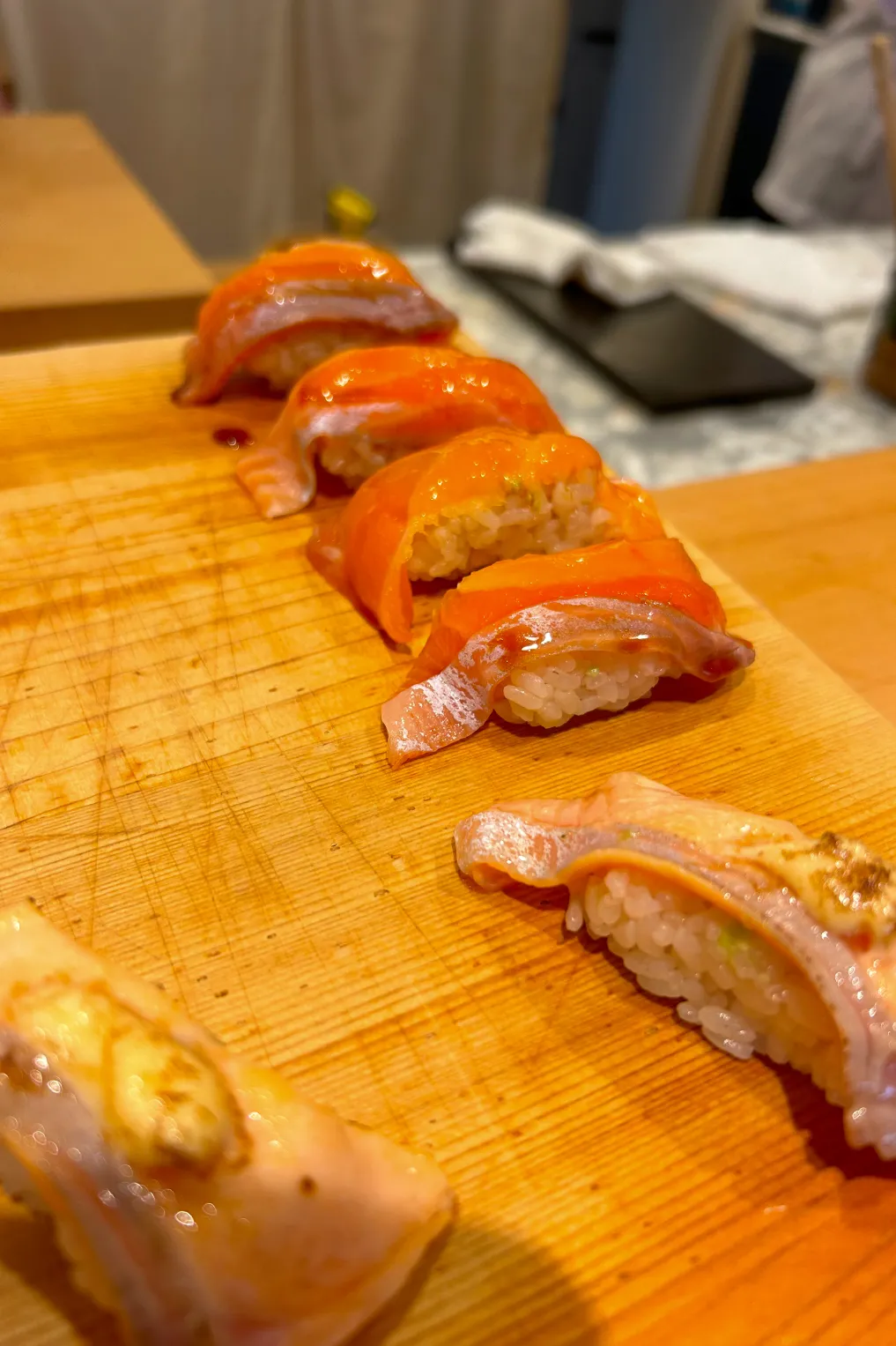
The sushi rice balls he crafted on that day were becoming increasingly consistent in shape and size compared to previous days. He practiced making nigiri with ‘yashiomasu’ (rainbow trout) once again. Additionally, he learned a technique called ‘aburi,’ which involves lightly grilling the surface of the fish. The nigiri he prepared tasted delicious. If he can master these essential nigiri skills, he will be able to further enhance customer satisfaction.

Next, the thin sushi roll of the day featured ‘kanpyo’ (pickled gourd). It was Jordy’s first time encountering and tasting ‘kanpyo’ (pickled gourd). He seemed surprised to try it but ended up liking it. Additionally, he learned how to prepare ‘kanpyo’ (pickled gourd).
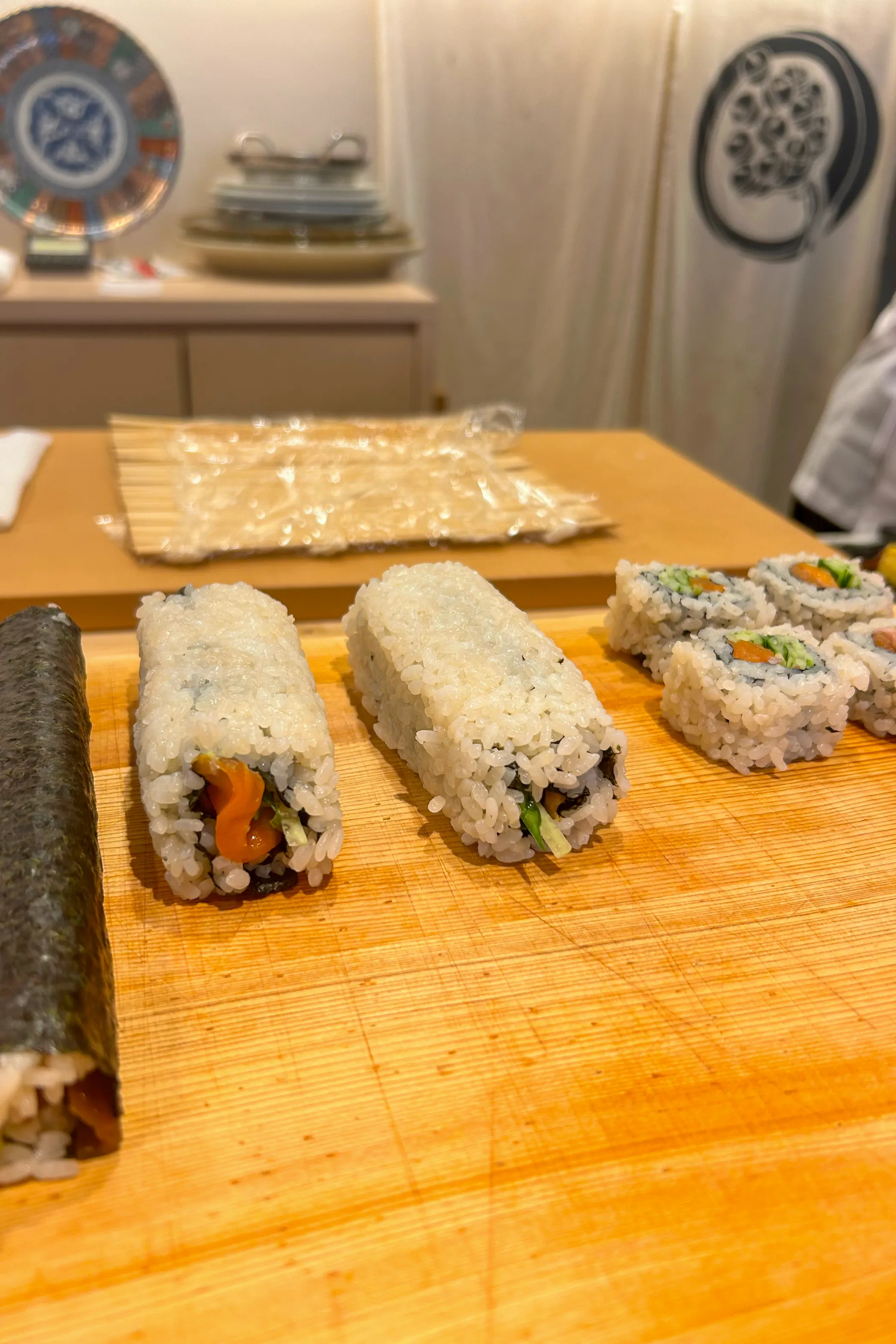
Next was a practice session focusing on the essential techniques for crafting ‘uramaki’ (inside-out rolls), a style very popular outside Japan. We are confident there will be numerous opportunities to make ‘uramaki’ (inside-out rolls) due to the growing demand from his customers.
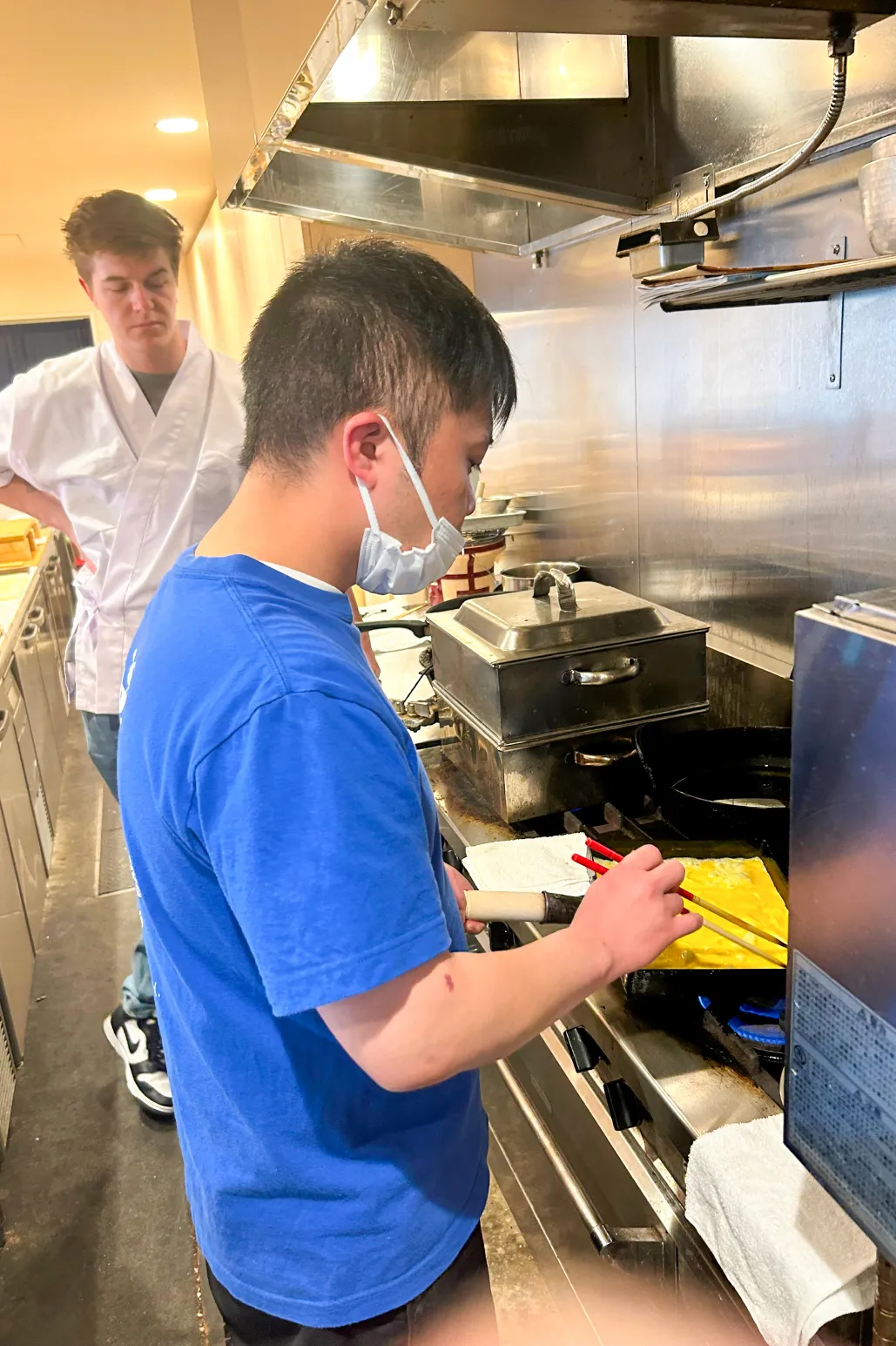
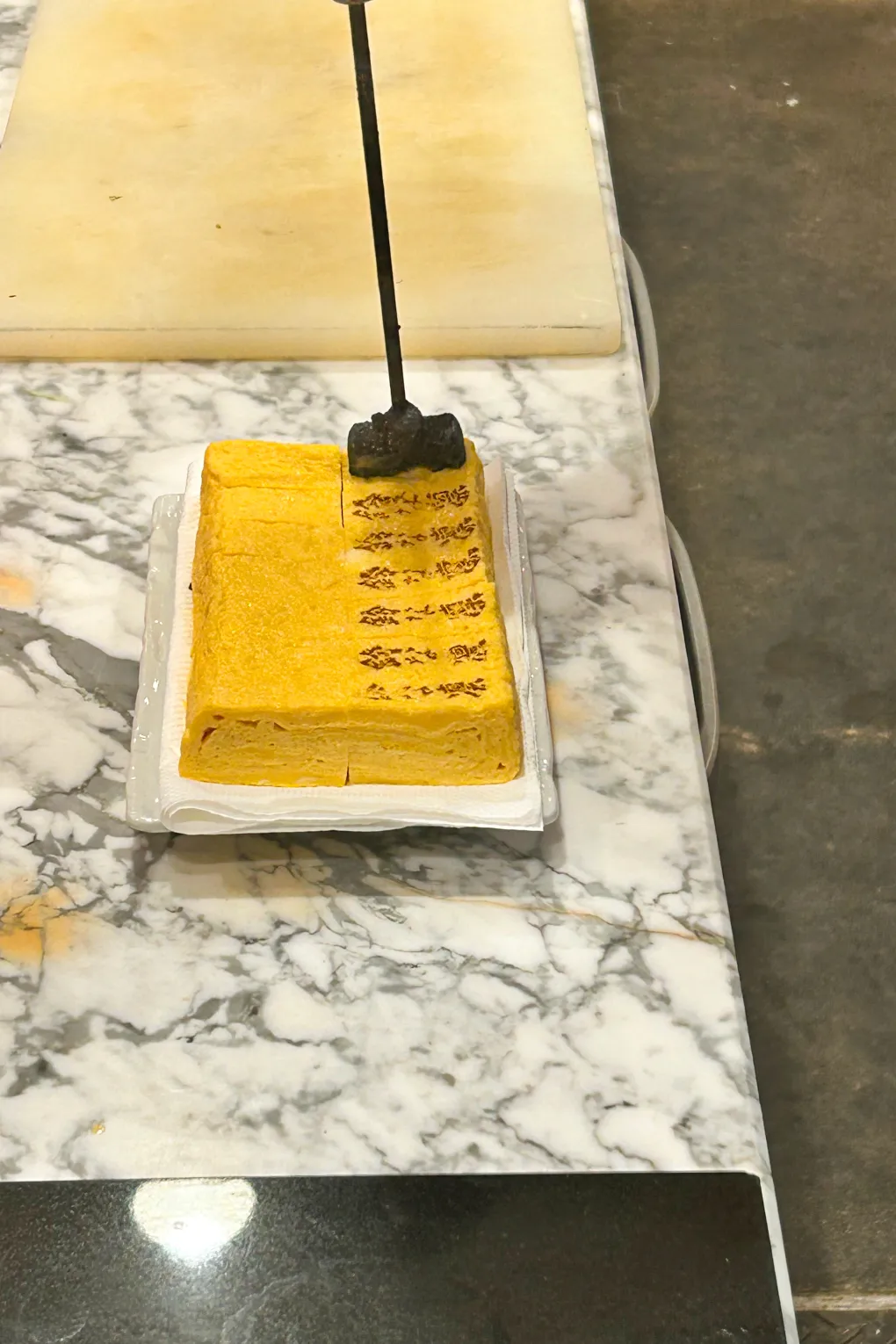
As a closing activity, he learned a recipe for a Japanese-style omelet that sushi restaurants often make, along with a unique technique for flipping the egg. Additionally, he found it fascinating to see the egg branded with an iron bearing the name ‘Suzunari.’
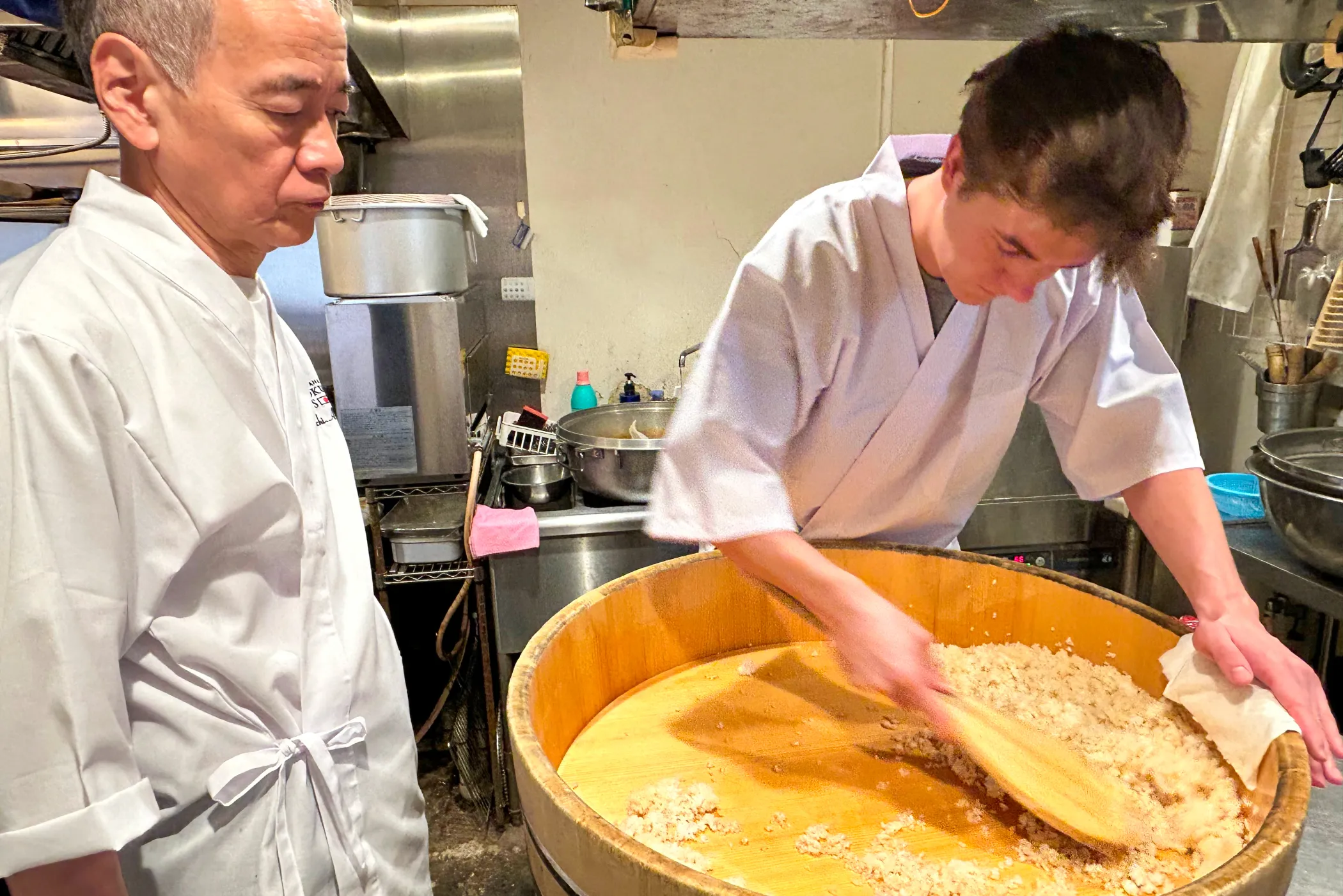
On Day 4, Jordy showcased remarkable improvement in preparing sushi rice and received a pass grade from the instructor.
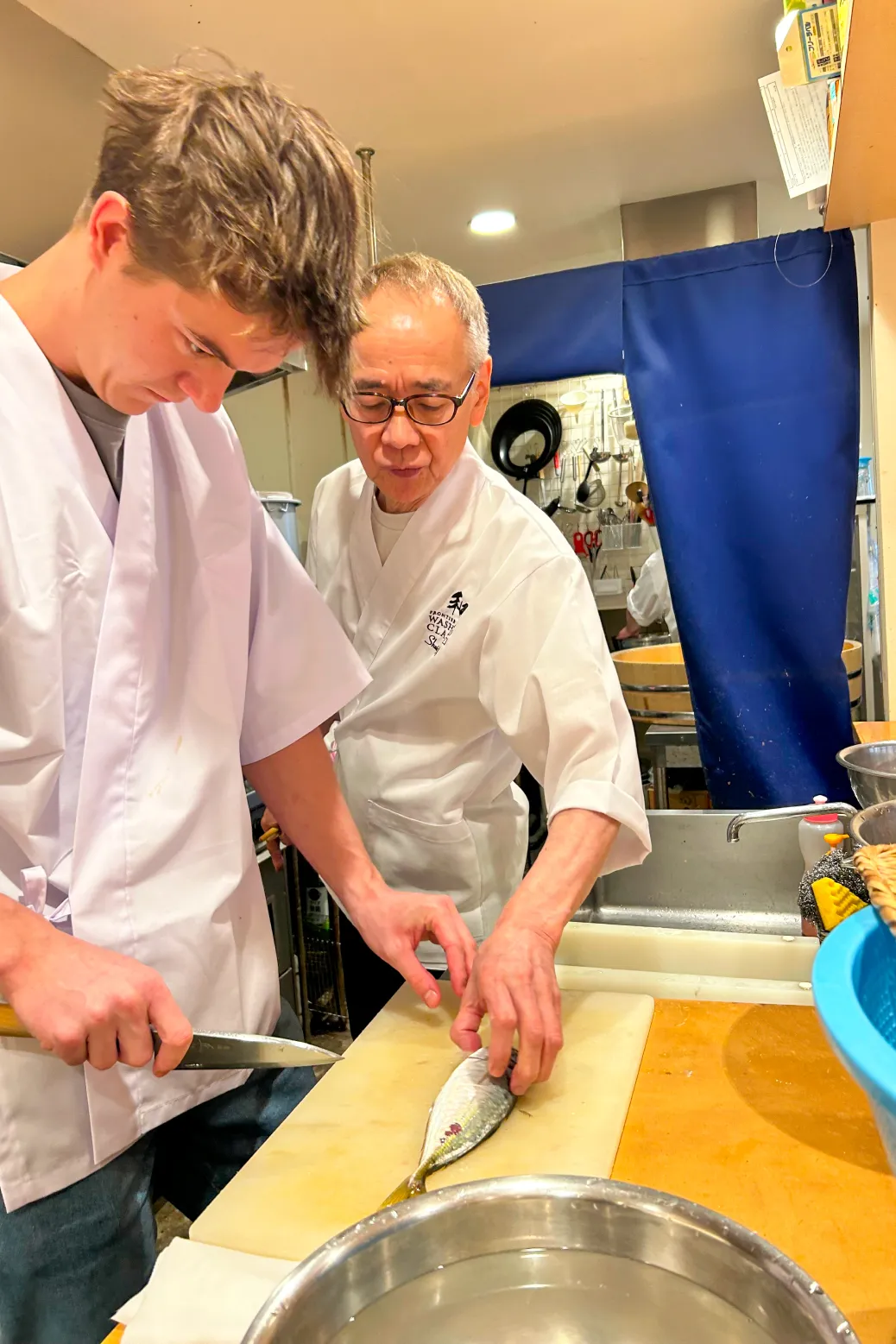

Day4 began with a practice session on filleting ‘aji’ (horse mackerel) and ‘iwashi’ (sardines). The technique for cutting and trimming sardines is unique. Did you know that there is a method for opening ‘iwashi’ (sardines) using your fingers instead of a kitchen knife?
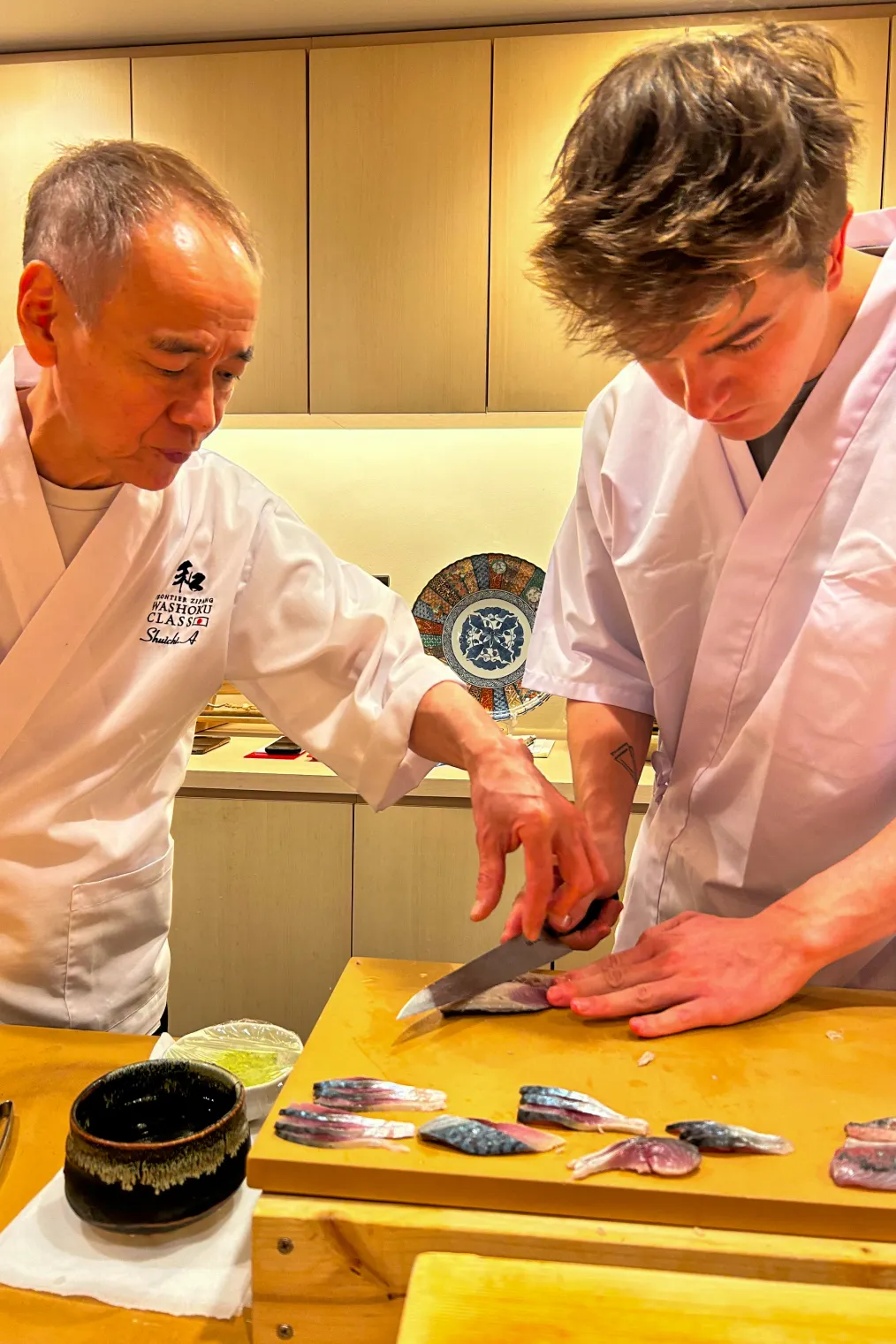
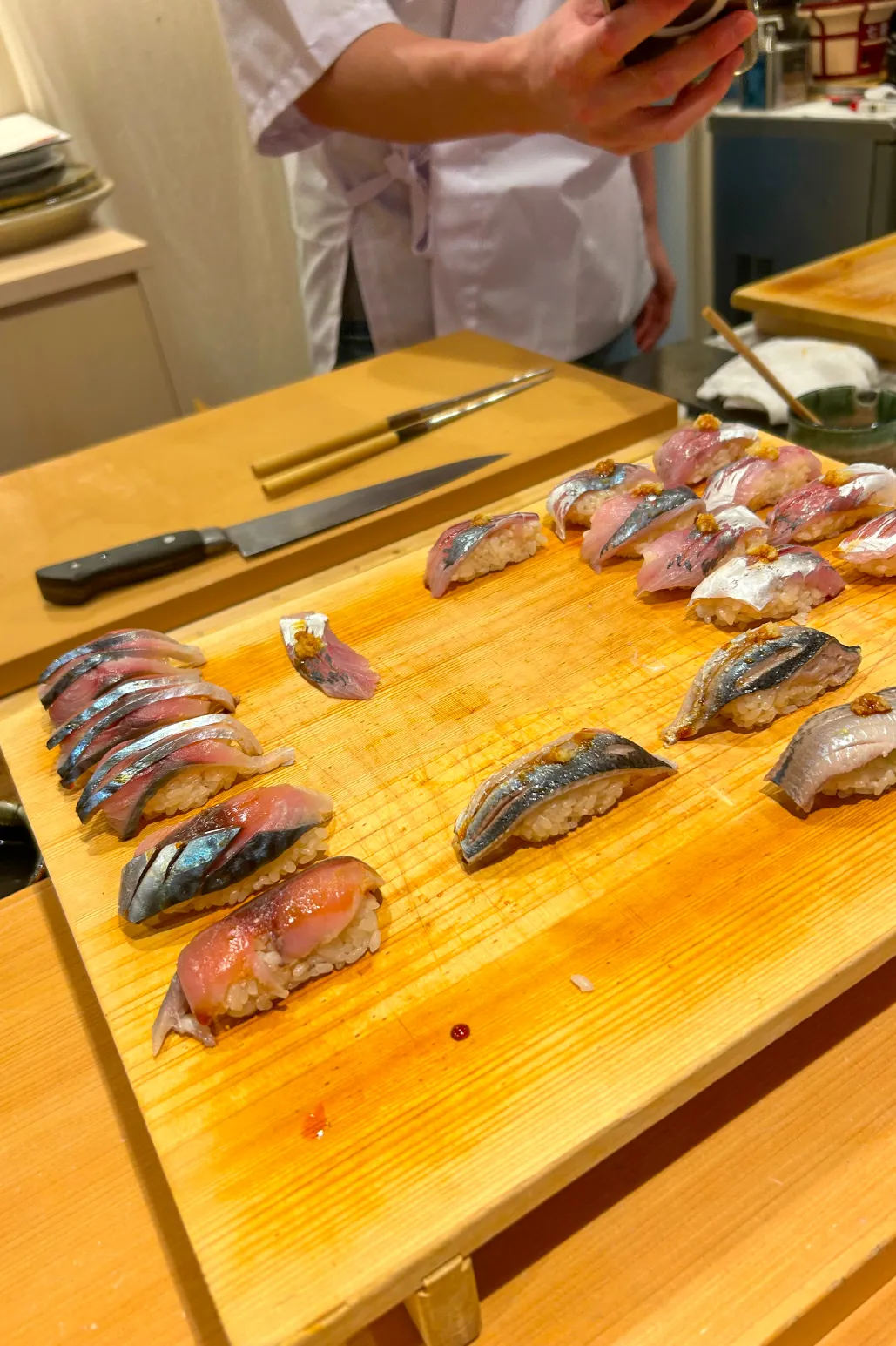
The ‘aji’ (horse mackerel) and ‘iwashi’ (sardines) can be enjoyed raw. However, they can also be enhanced by lightly salting them and then rinsing them with diluted vinegar.
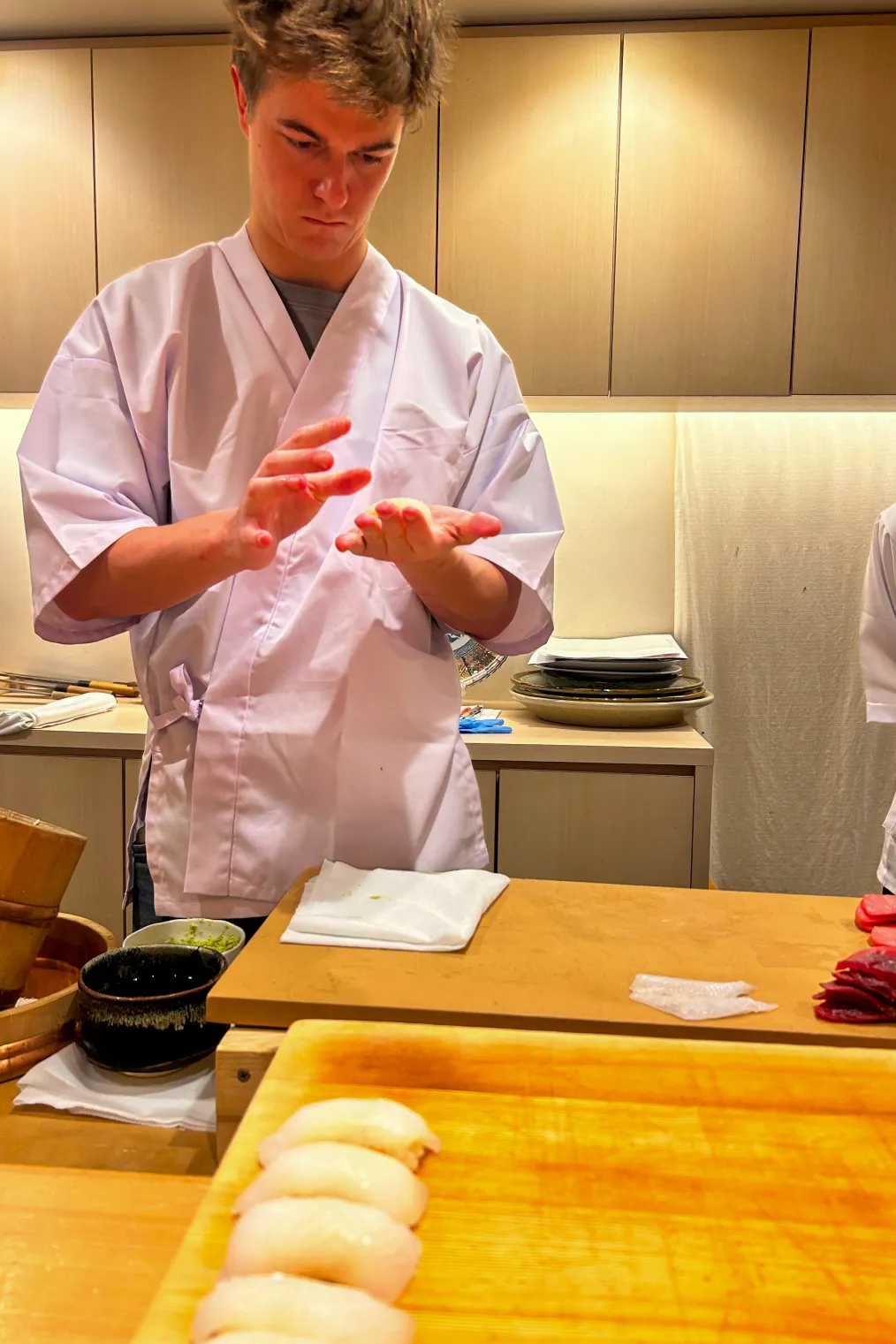
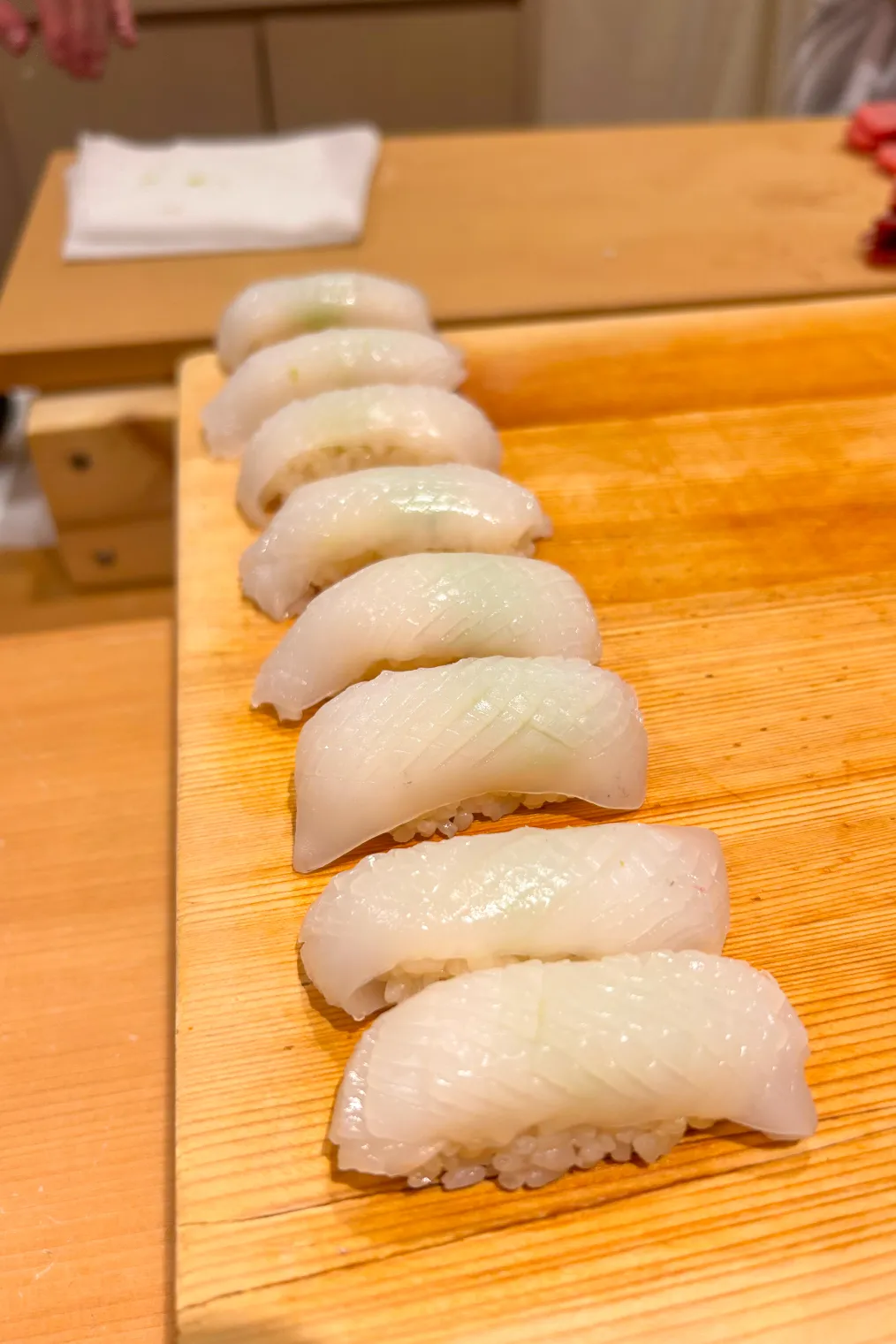
After the sushi rice ball practice, Jordy moved on to crafting nigiri with ‘iwashi’ (sardine), ‘aji’ (horse mackerel), ‘shime-saba’ (salted and vinegared mackerel), ‘ika’ (squid), and ‘maguro’ (tuna). Each ingredient should be carefully sliced to consider its mouthfeel and texture. For instance, tuna should be sliced thicker, while squid should be sliced thinner. Additionally, some ingredients are easier to craft nigiri with than others. Therefore, practicing nigiri with each ingredient is a step ahead of practicing nigiri without any ingredient. Jordy was surprised by the difference between the nigiri he crafted and the ones the instructor crafted. A continuous effort should be made to approach the instructor’s level!
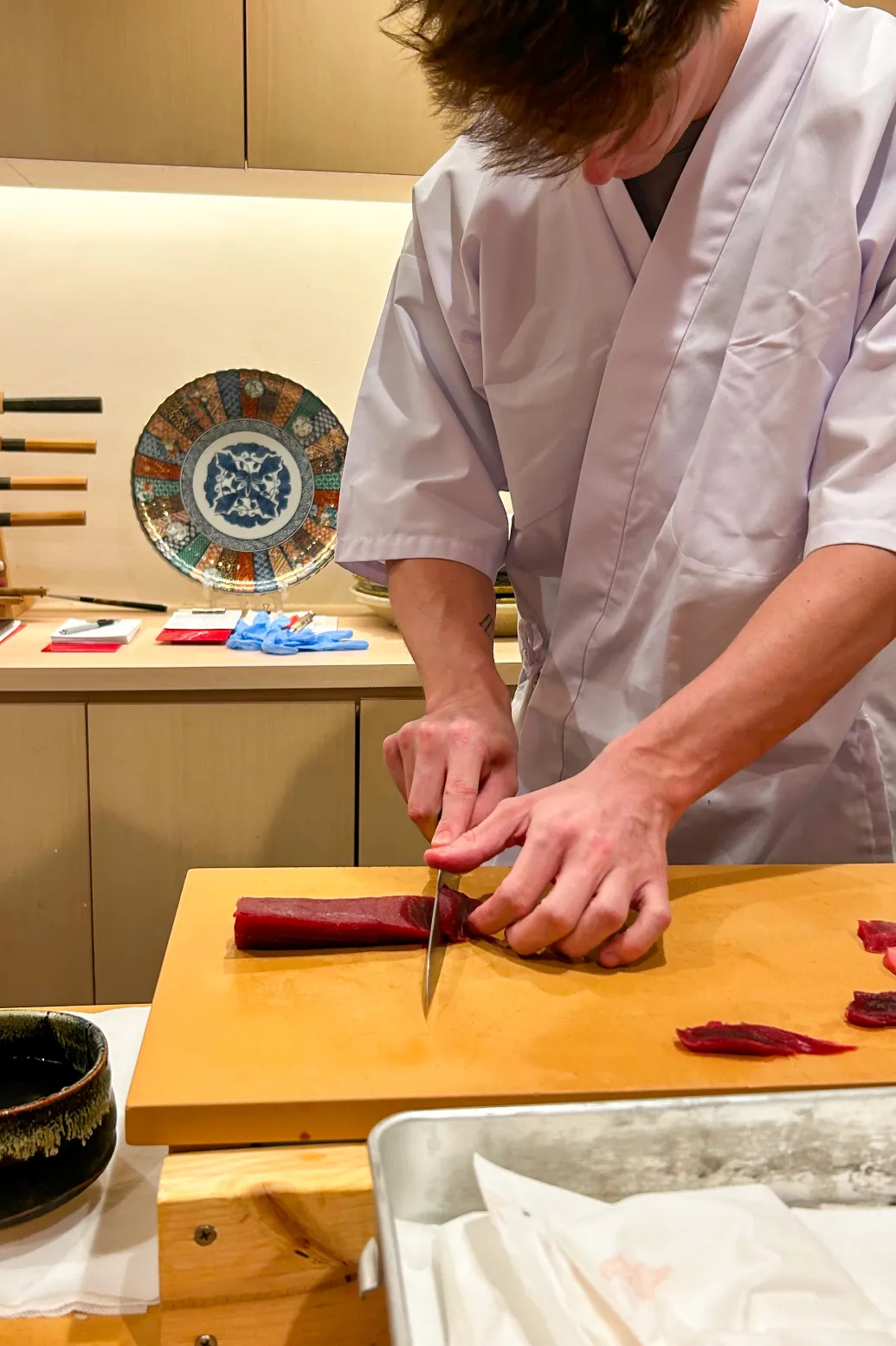
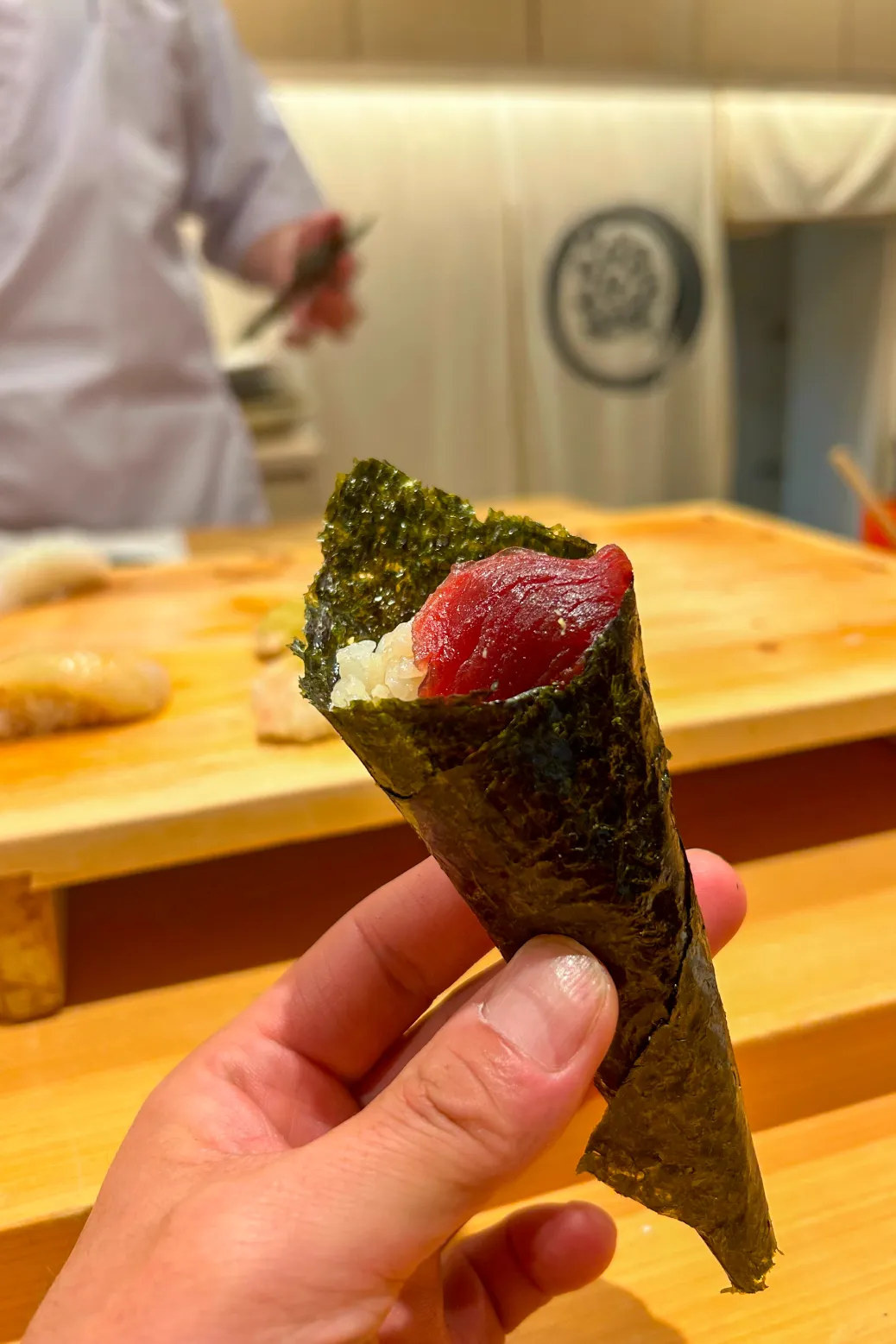
The lesson concluded with a practice session of ‘temaki’ (hand-rolled sushi). There is a technique to skillfully wrap sushi rice with a sheet of dried seaweed so it resembles an ice cream cone. The instructor effortlessly crafted a piece of ‘temaki’ (hand-rolled sushi) with one hand
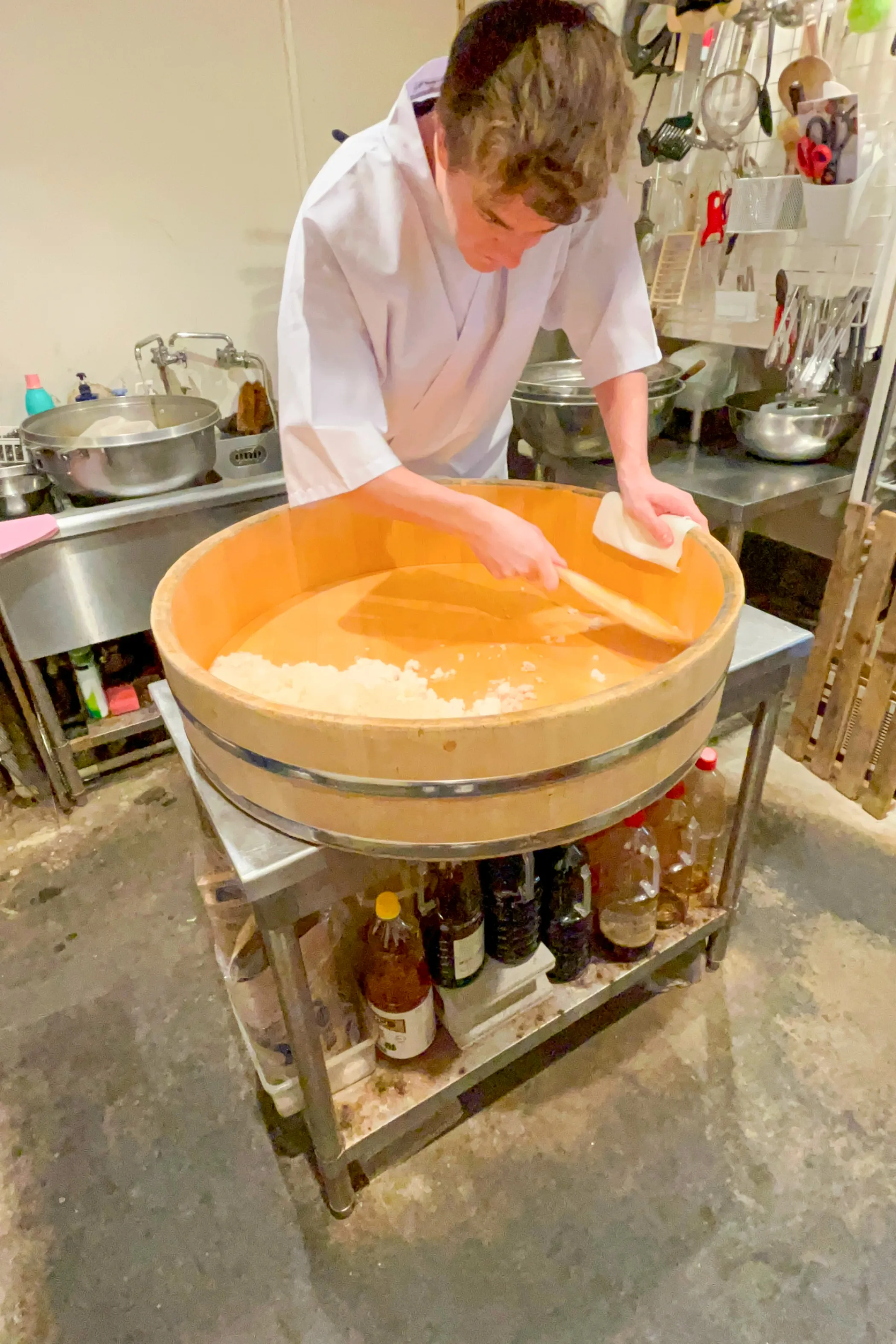
In the blink of an eye, the final day of the 1-Week Sushi Course arrived. Jordy managed to prepare sushi rice so smoothly that the instructor awarded him a full mark with a smile.
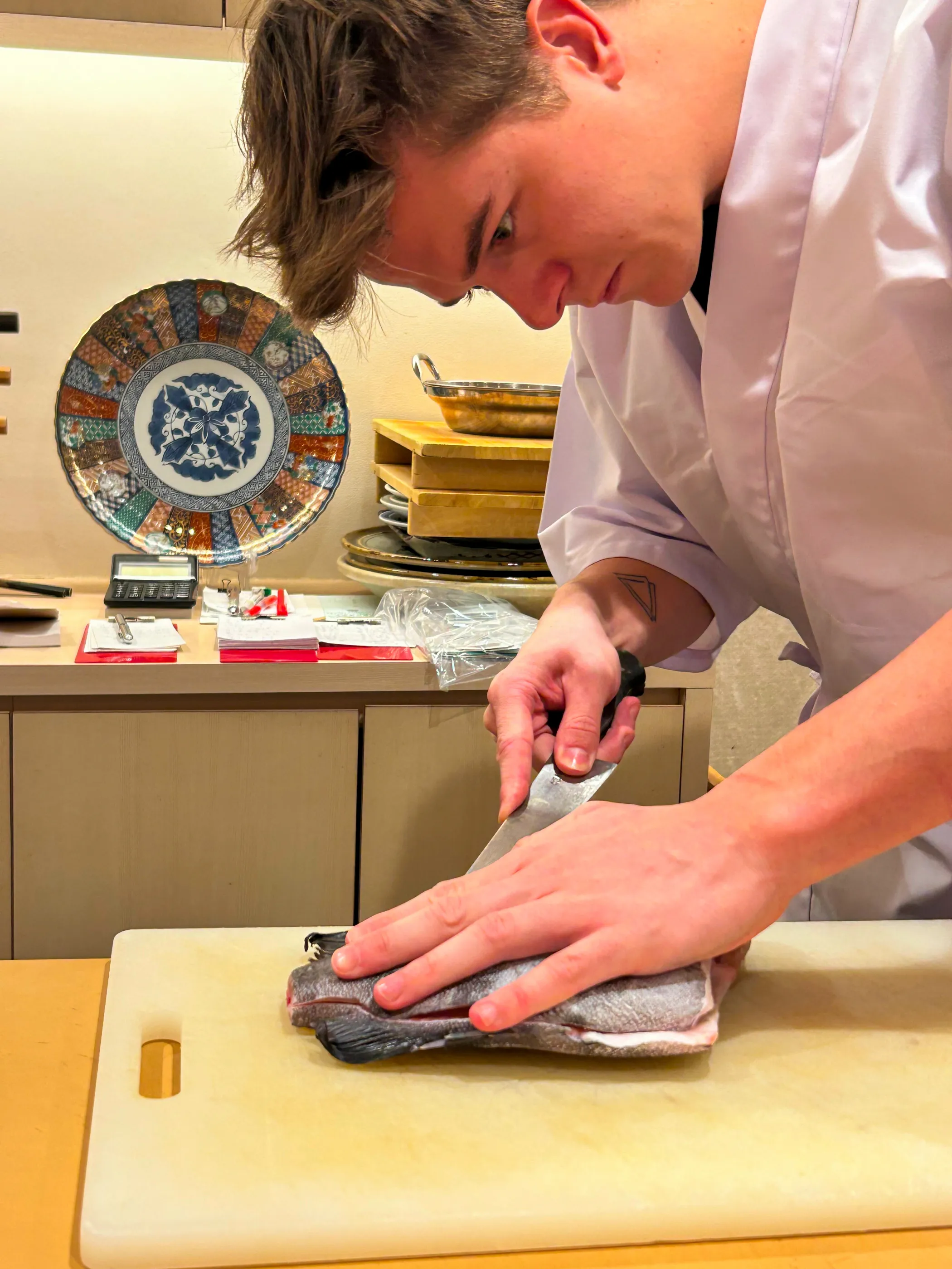
While waiting for the rice to cook, he practiced filleting ‘ishidai’ (striped beakfish). It is a large, tough fish, but he attempted to fillet it while keeping the instructor’s advice and what he had learned in previous lessons in mind.
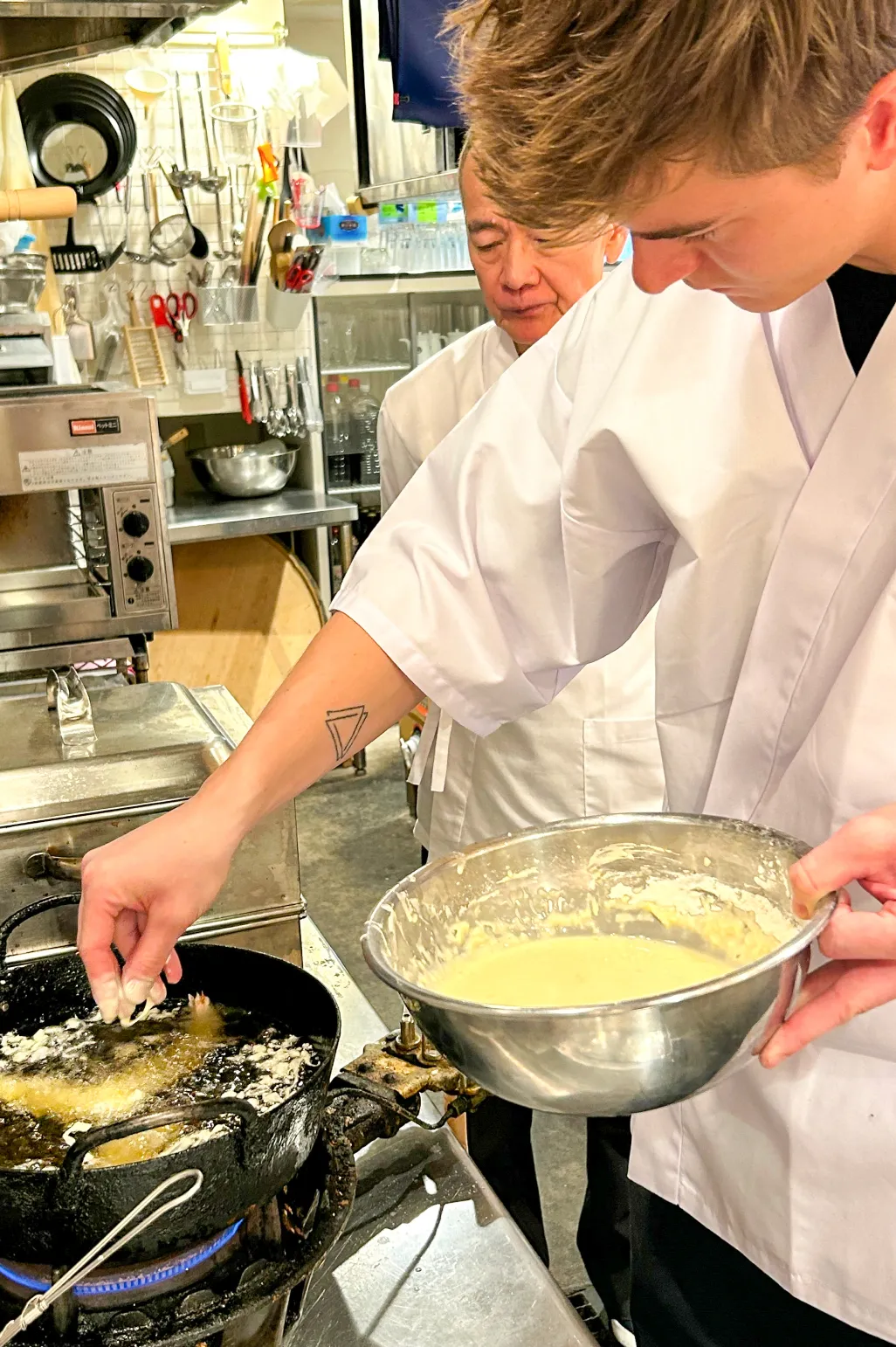
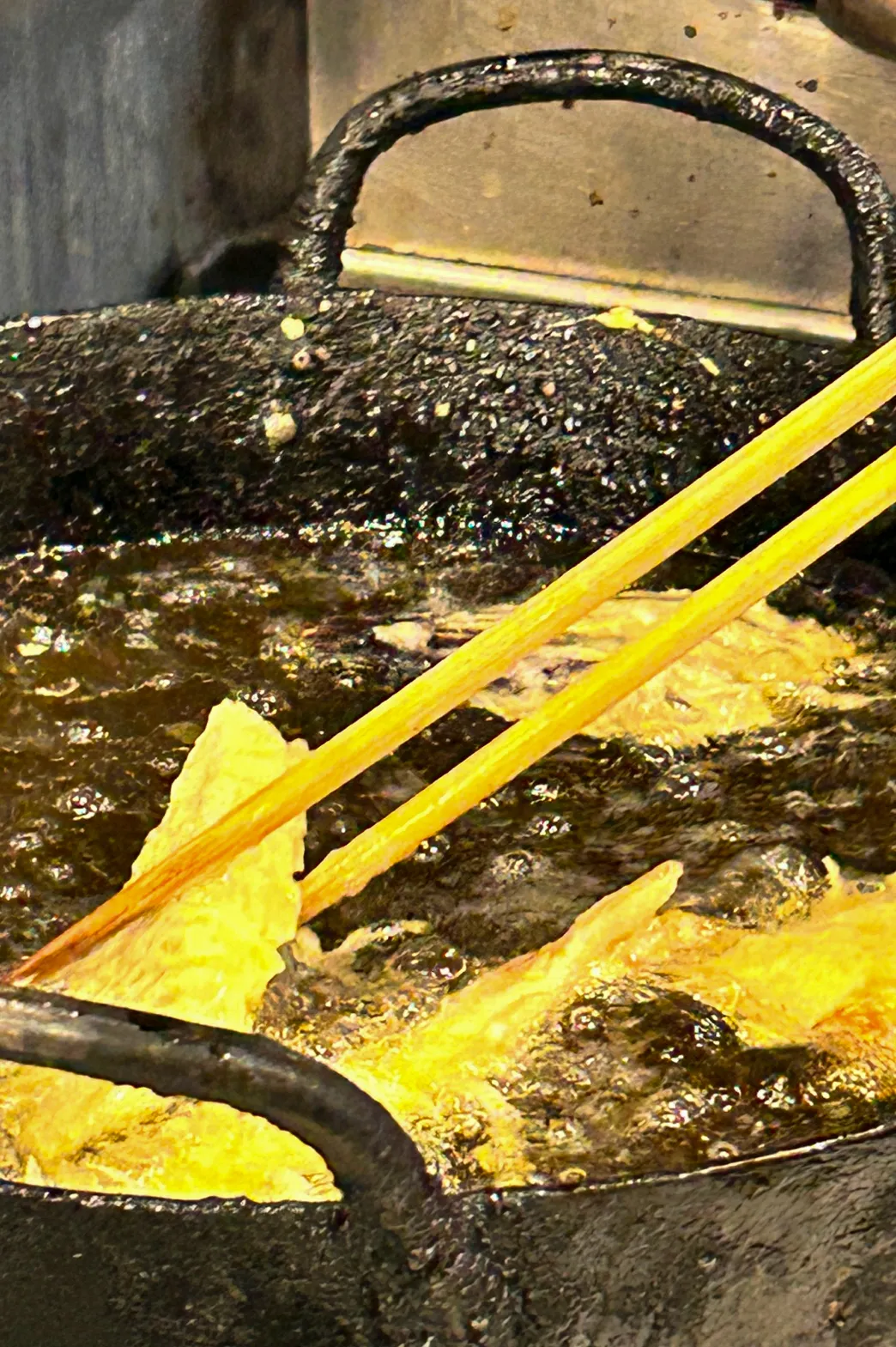
Next was a tempura practice session. Although he had cooked tempura before, he learned some key points from the instructor. He was delighted that he would now be able to serve even tastier tempura than before. It’s not just the recipe; preparation is also a crucial factor that determines the taste. In addition, he learned a technique of marinating tuna.
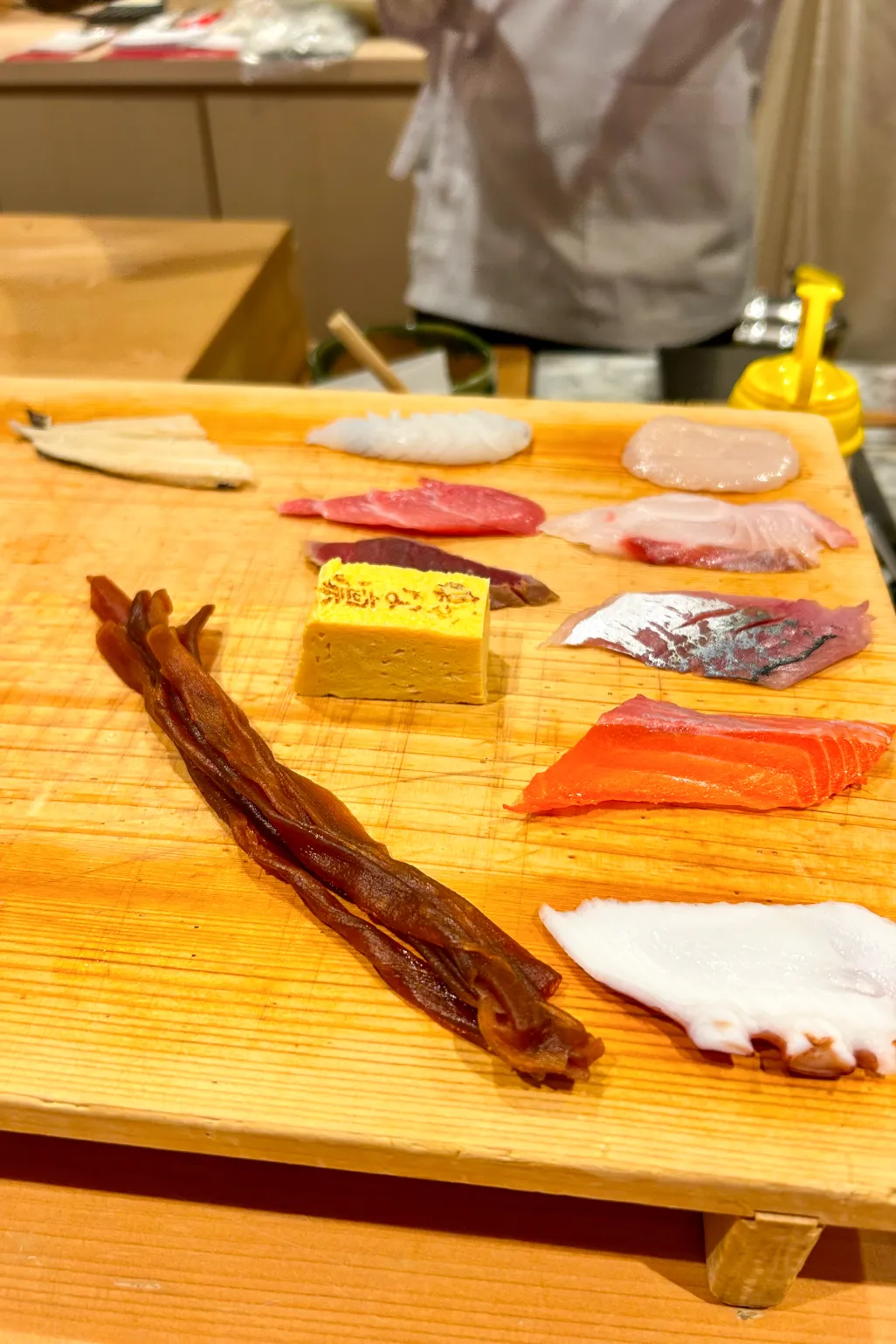
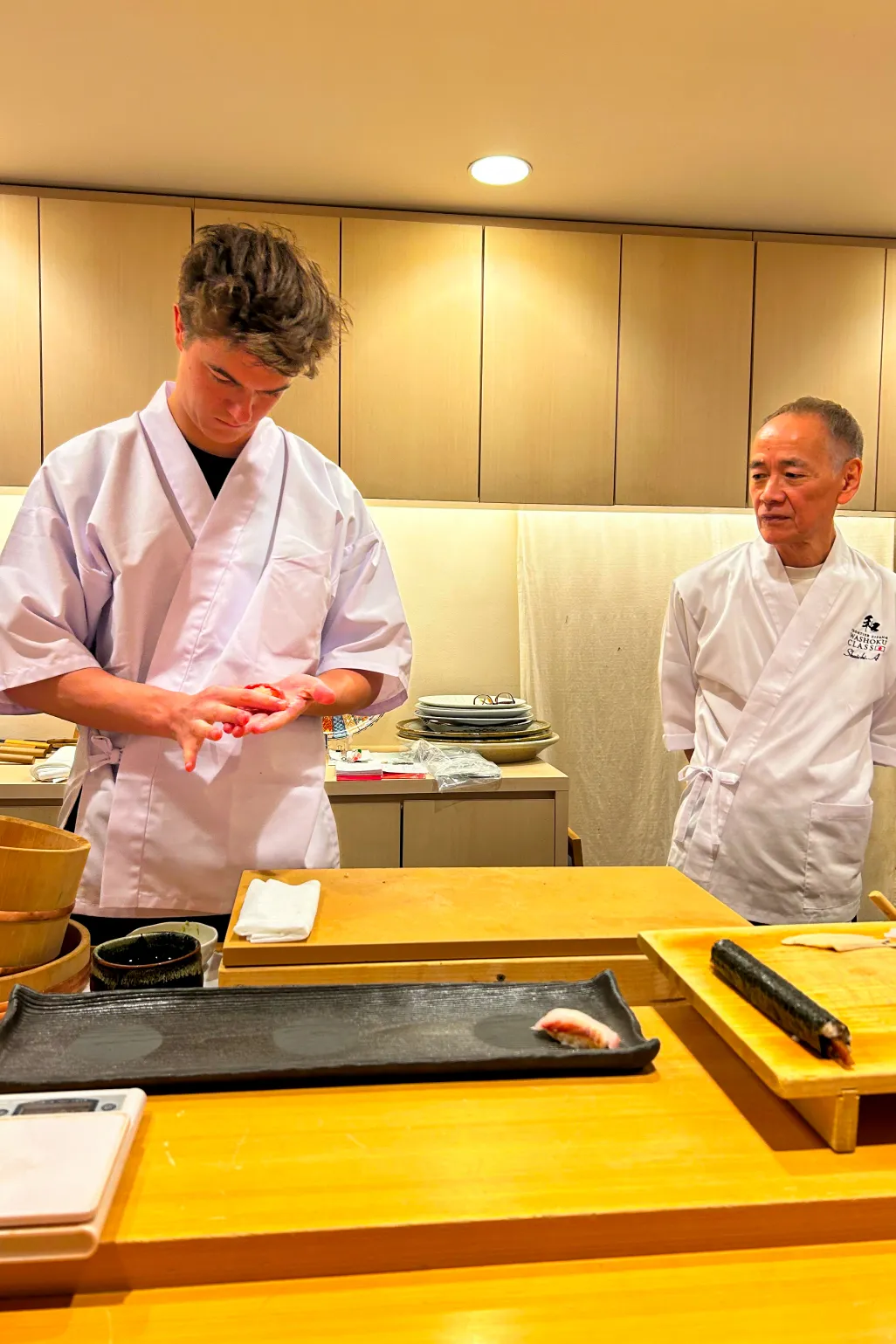
Finally, to demonstrate what Jordy had learned over the course of one week, he attempted to craft a sushi plate for one person. It consisted of the following ingredients: ‘tako’ (octopus), ‘yashiomasu’ (rainbow trout), ‘aji’ (horse mackerel), ‘ishidai’ (striped beakfish), ‘hotate’ (scallop), ‘ika’ (squid), ‘toro’ (fatty flesh of tuna), ‘zuke-maguro’ (marinated tuna), ‘tamago’ (Japanese-style omelet), ‘anago’ (conger eel), and sushi rolls with ‘kanpyo’ (picked gourd).
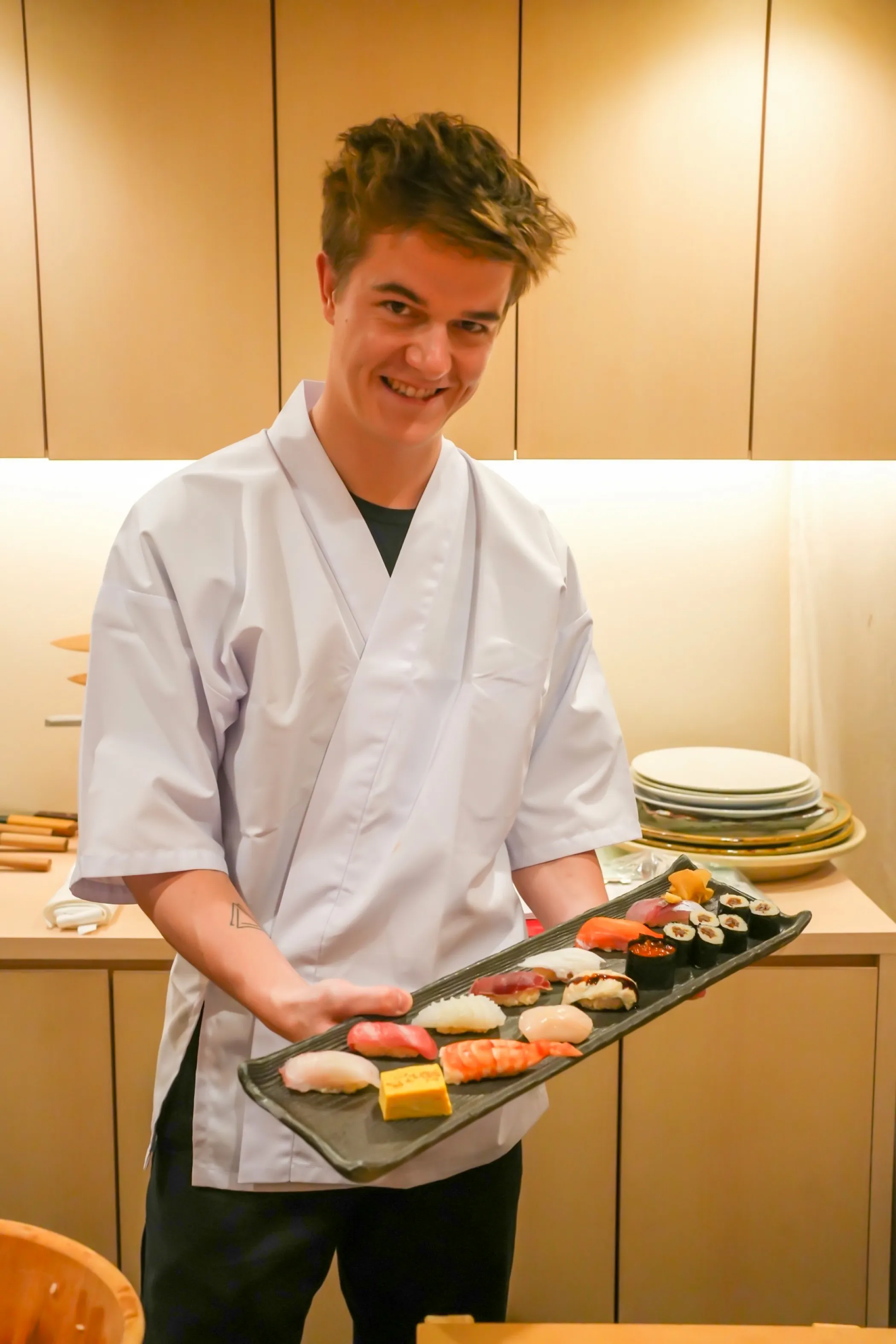
Some ingredients seemed challenging to craft nigiri with, but Jordy managed to create all nigiri well, and they tasted delicious. The instructor noted significant improvement over the week and advised Jordy to maintain the skills he had gained, encouraging him to reach out anytime he had questions.
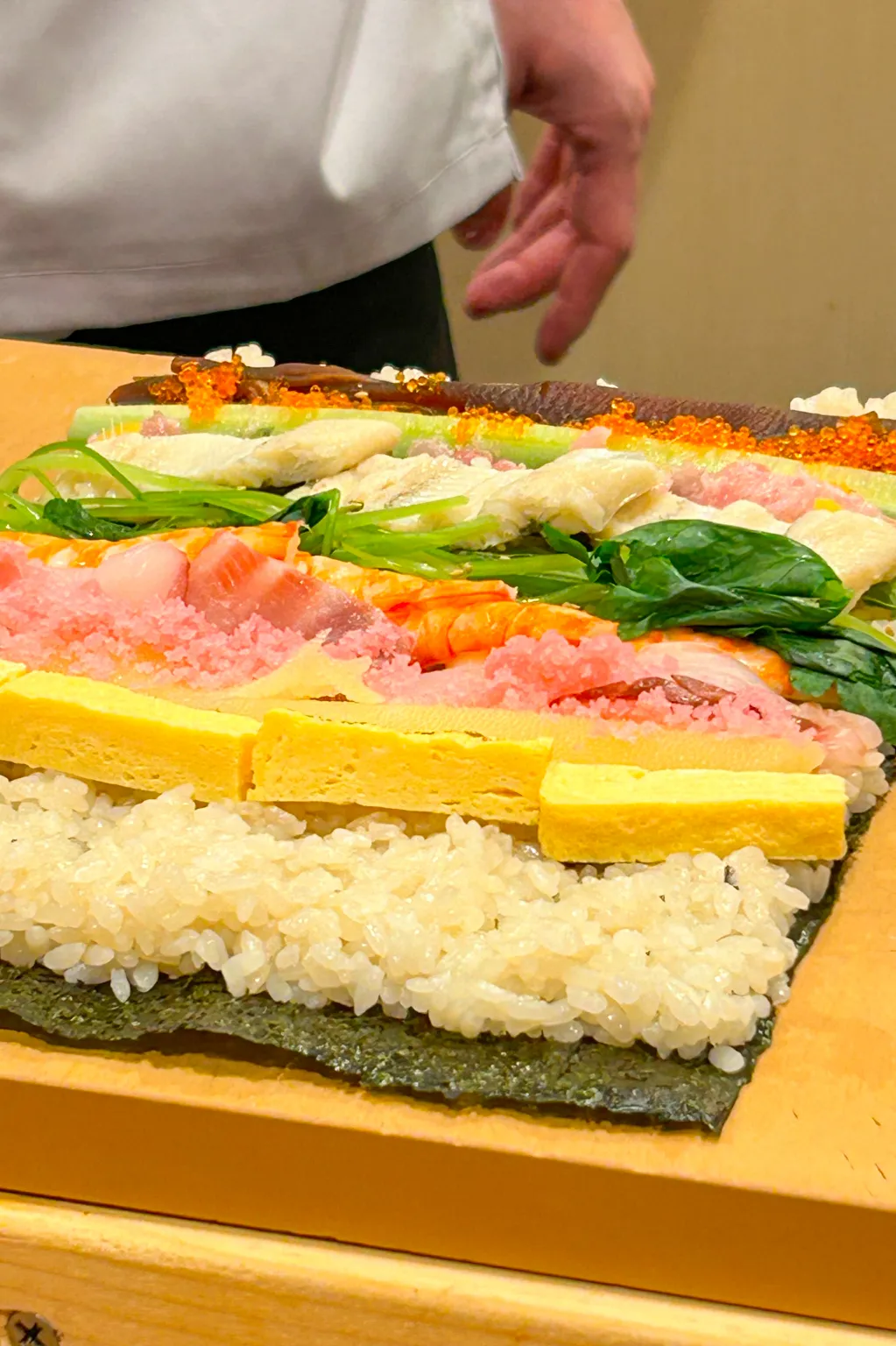
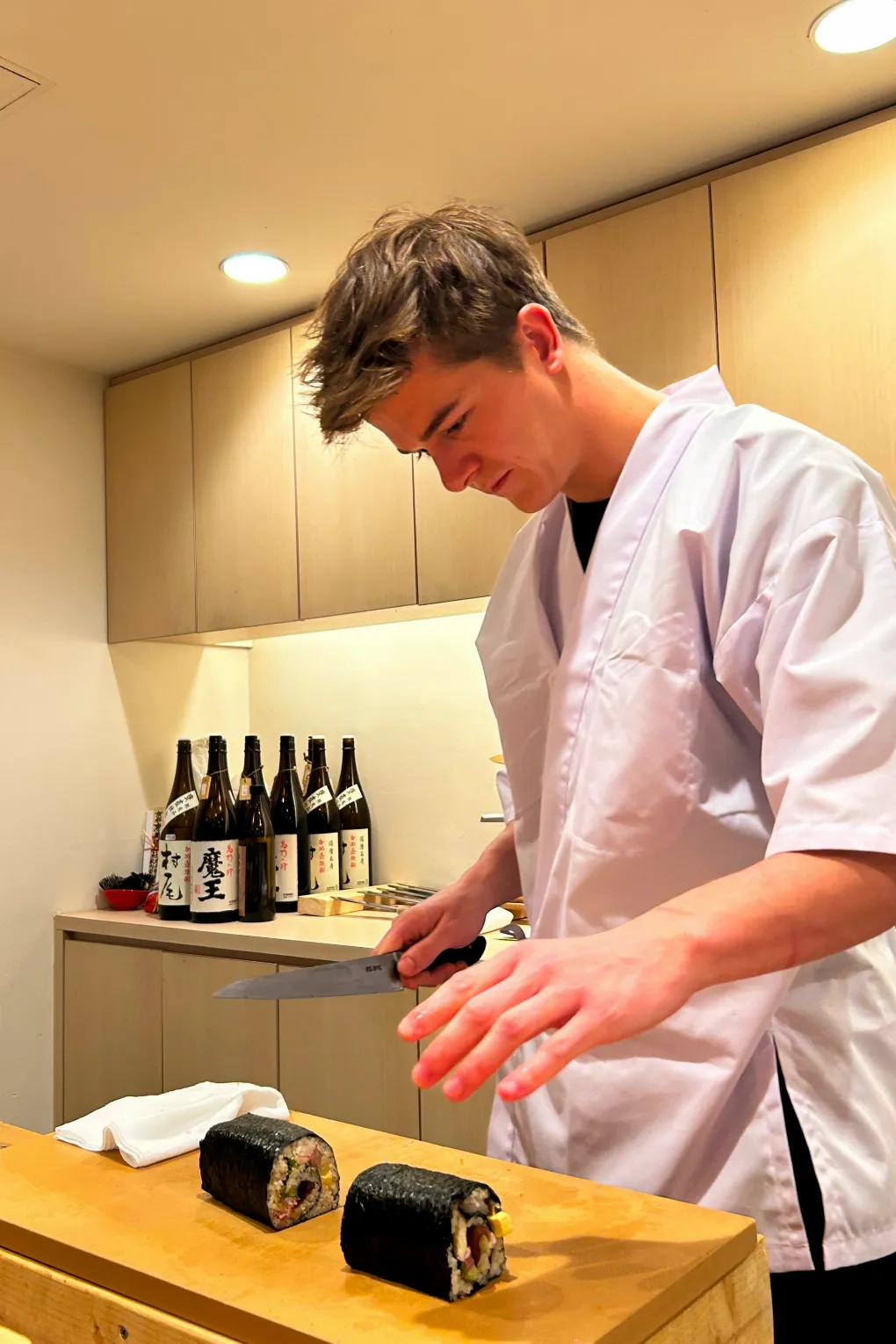
As the closing activity of the Sushi Course, Jordy had a practice session on ‘futomaki’ (thick sushi roll) in preparation for Setsubun (the day preceding the arrival of spring in the lunar calendar), which was thicker than ‘Ehomaki.’ Although he had plenty of practice crafting ‘hosomaki’ (thin sushi rolls), crafting thicker rolls proved more challenging due to the increased number of ingredients. However, he managed to successfully create a thick sushi roll.

The instructor was impressed to see Jordy improving his skills day by day, a testament to his eagerness and enjoyment. We are confident that the sushi that he crafts will bring joy to his customers.
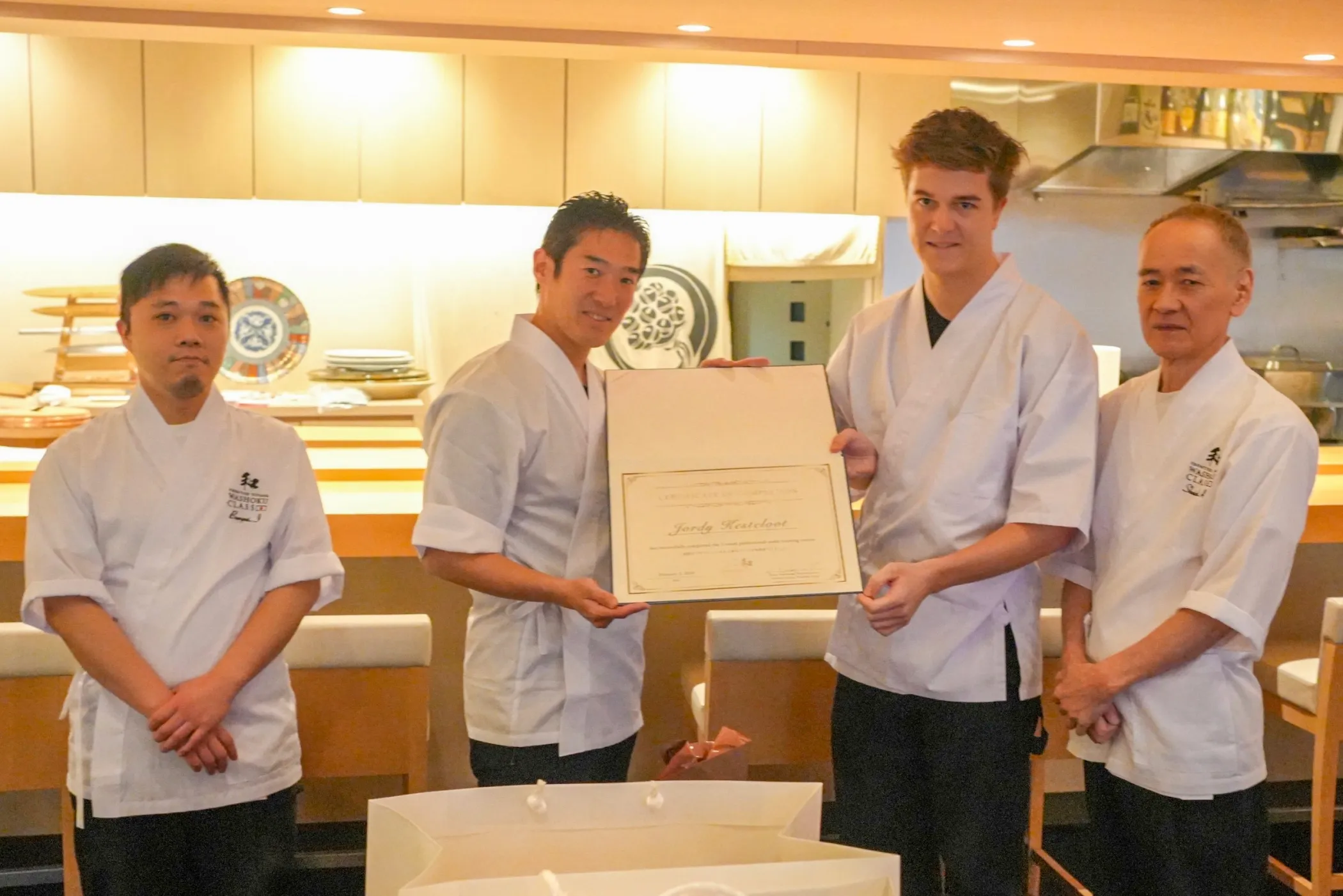
The1-Week Sushi Course was both enjoyable and fruitful. We sincerely look forward to seeing you again, Jordy!
